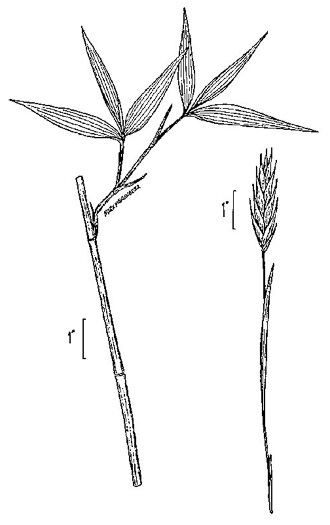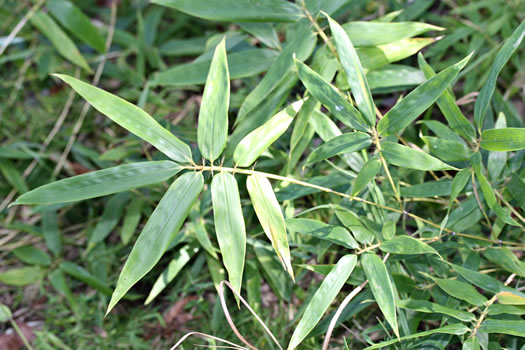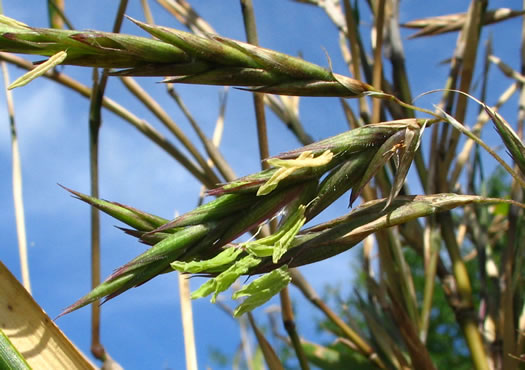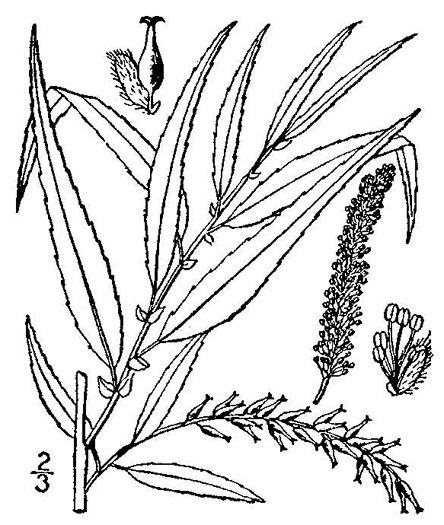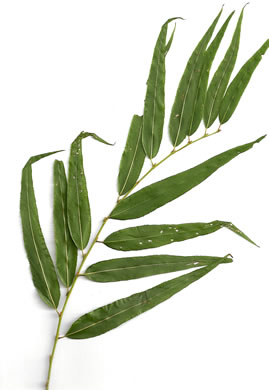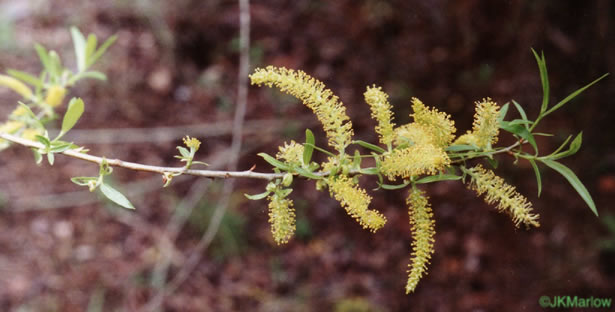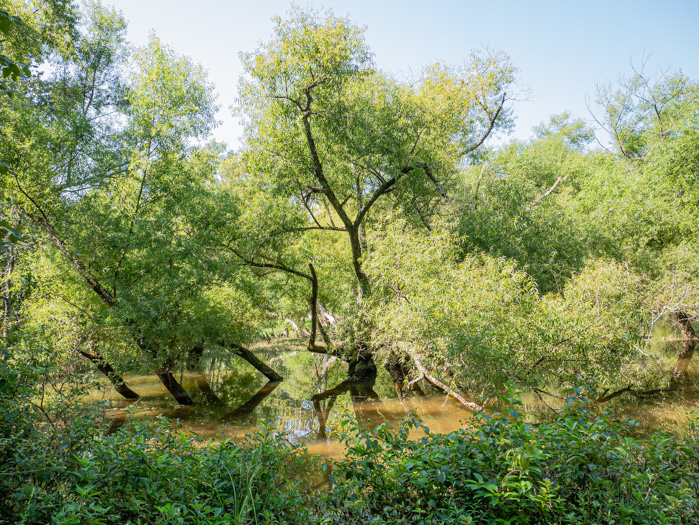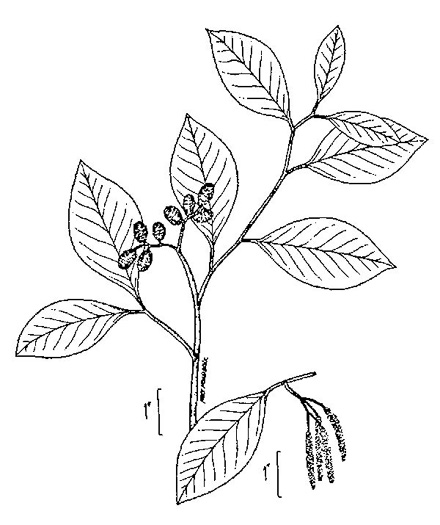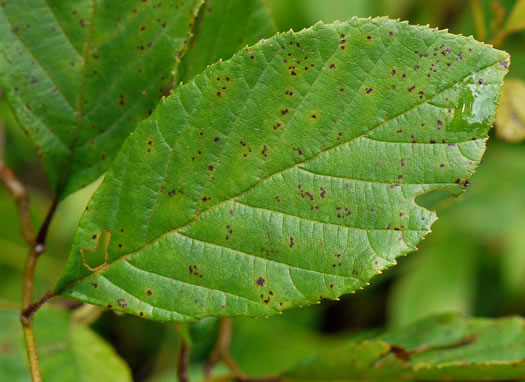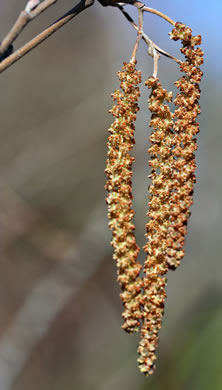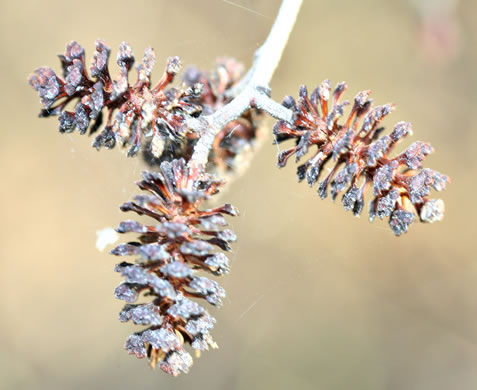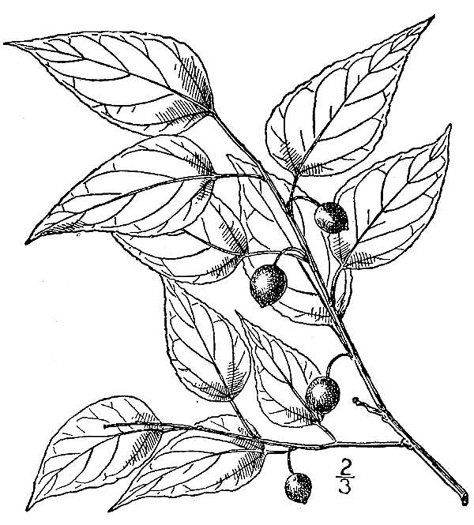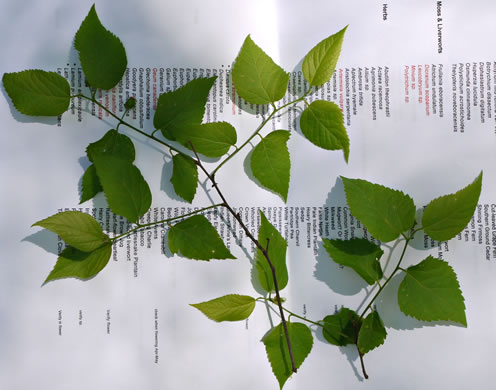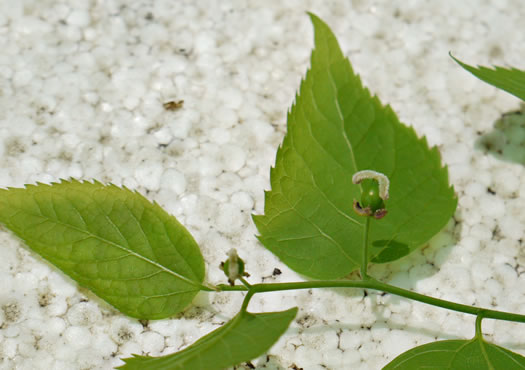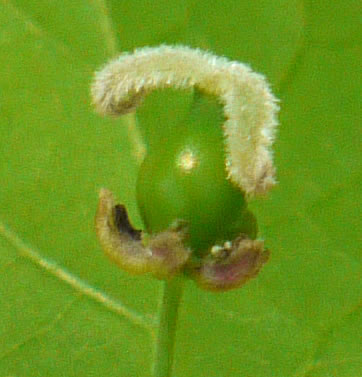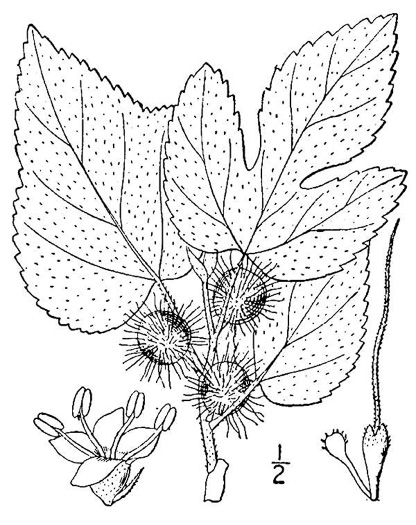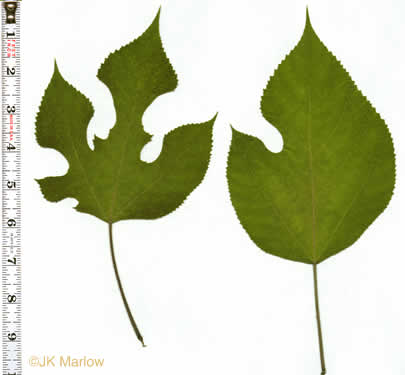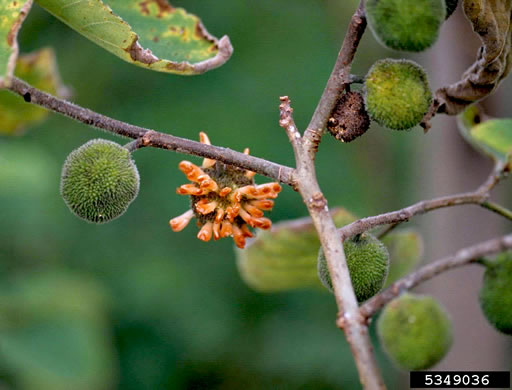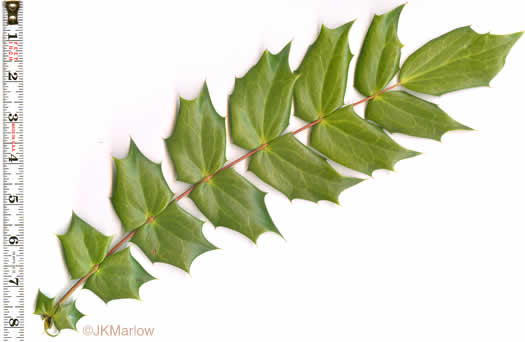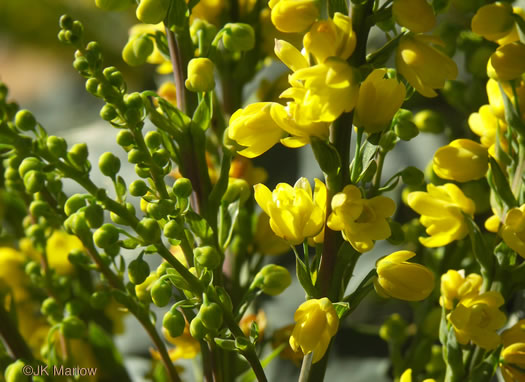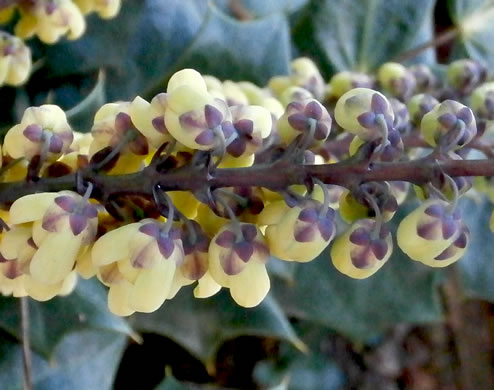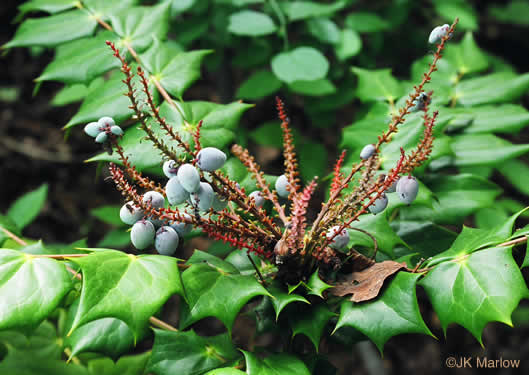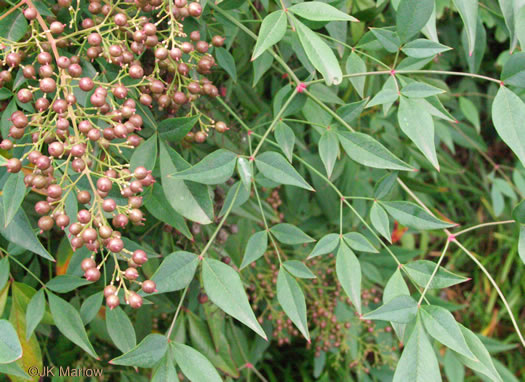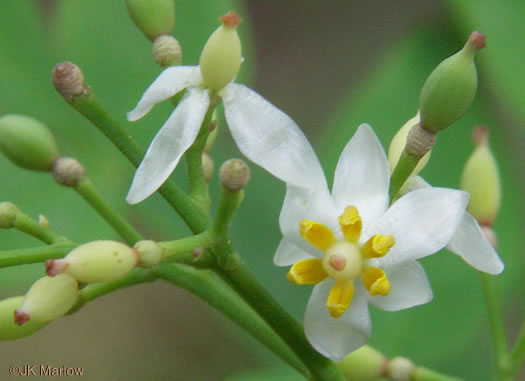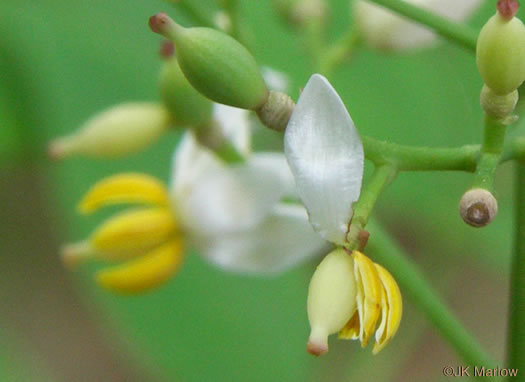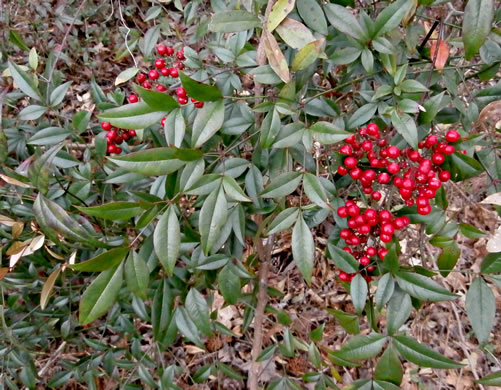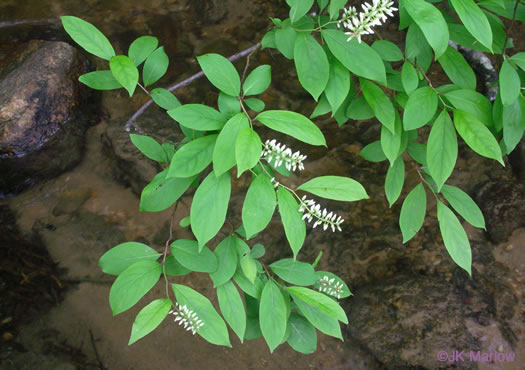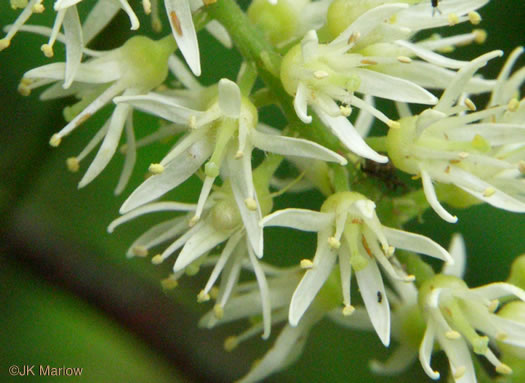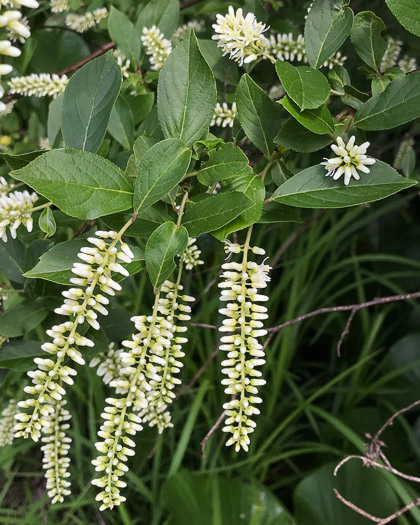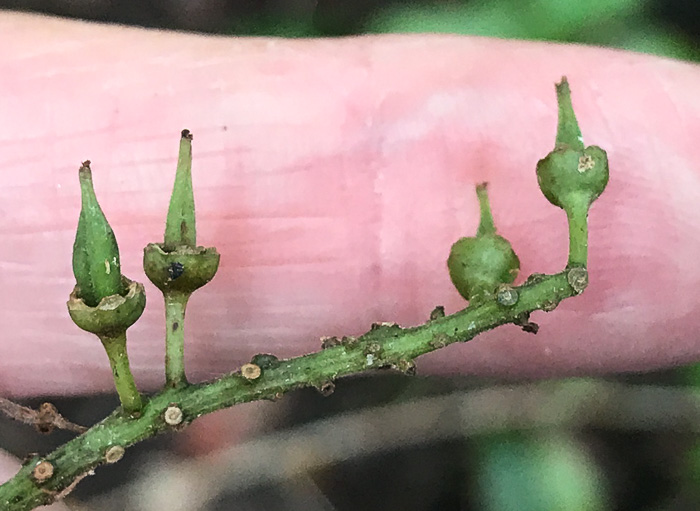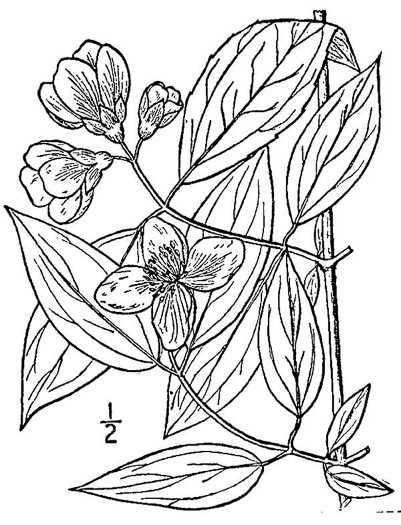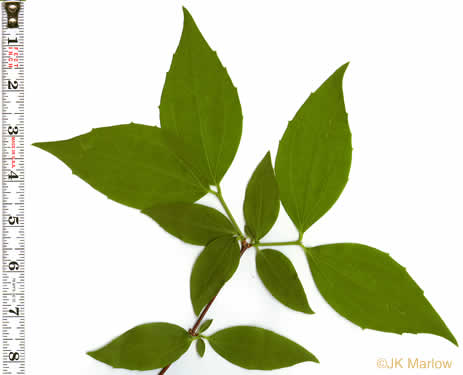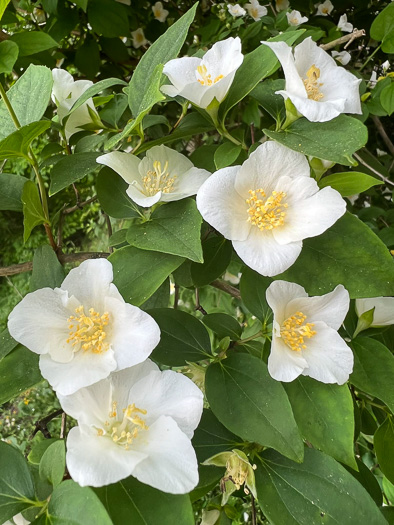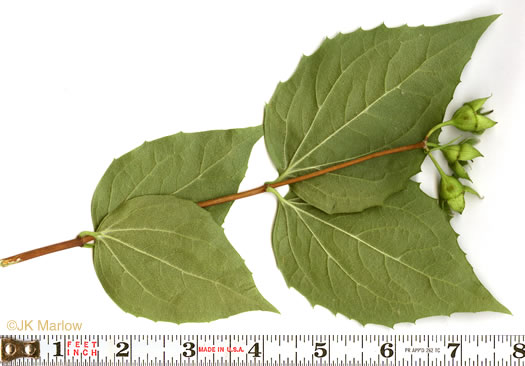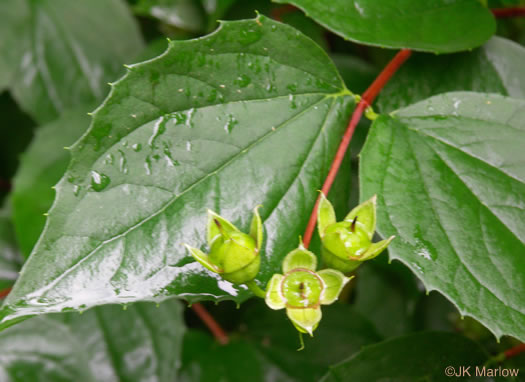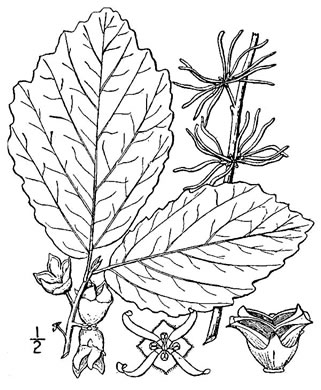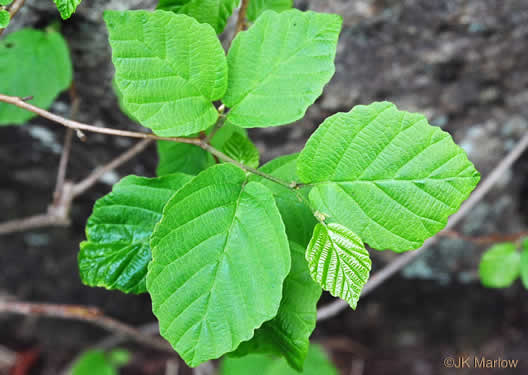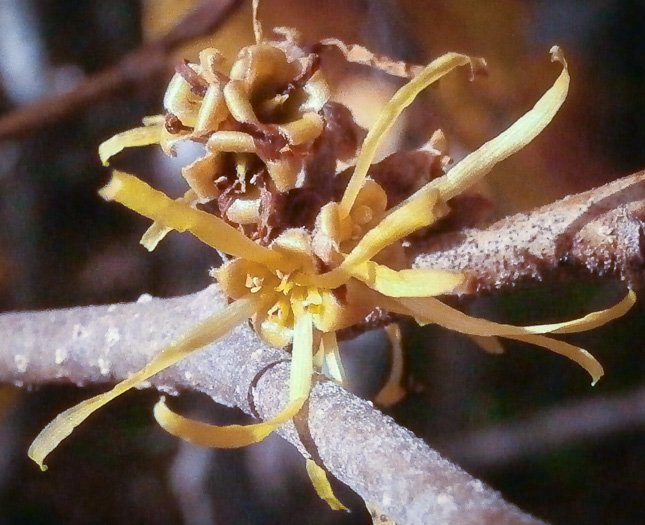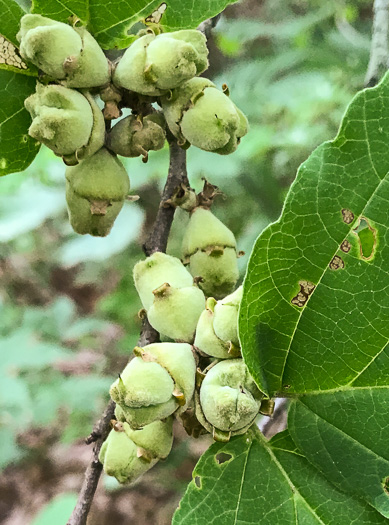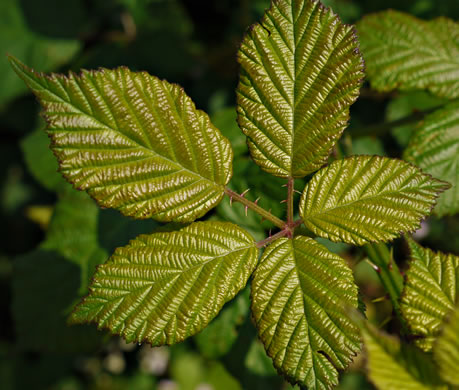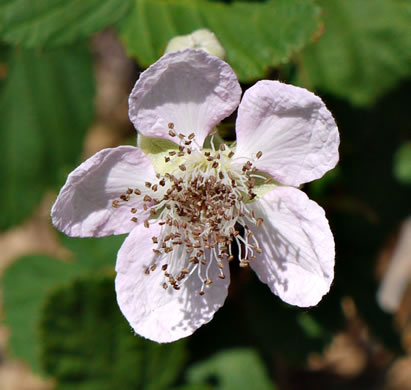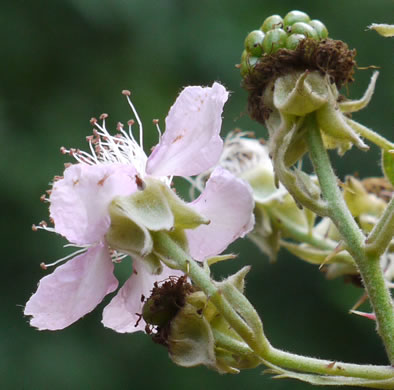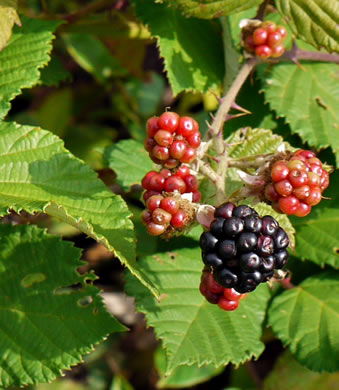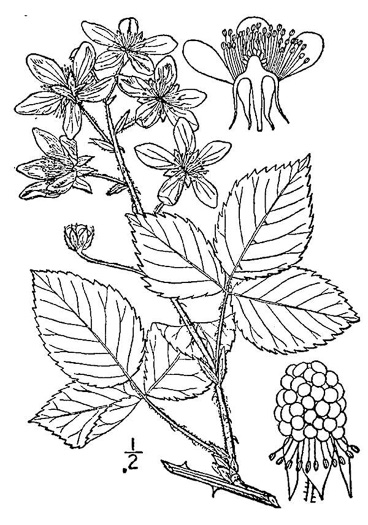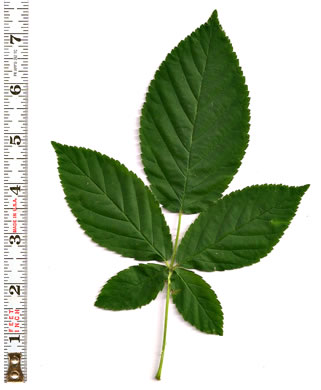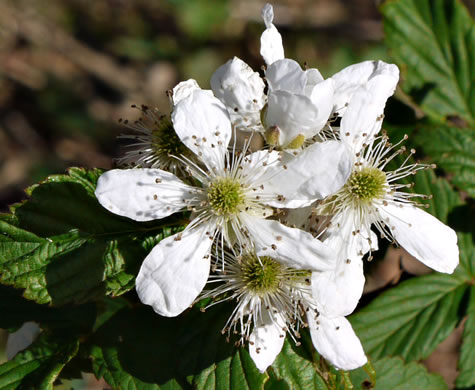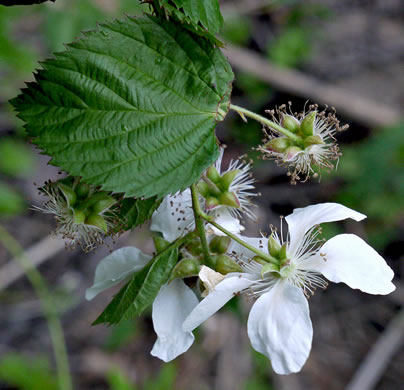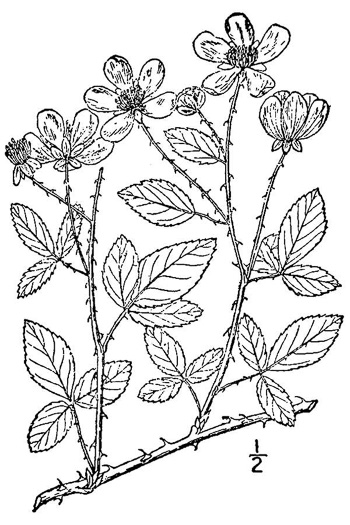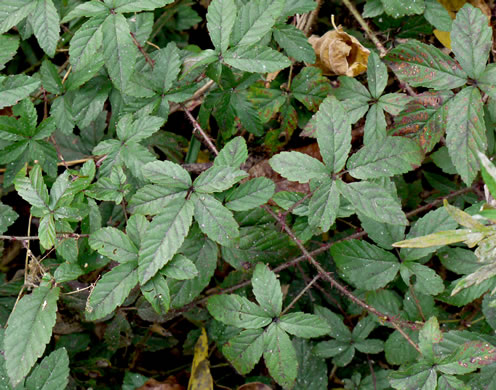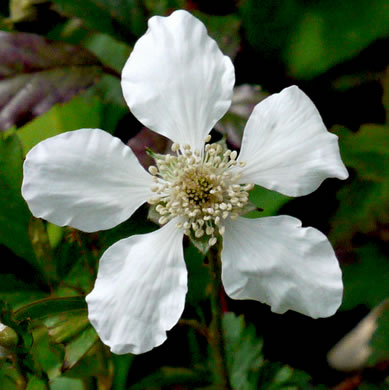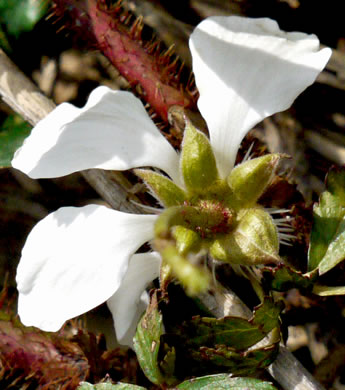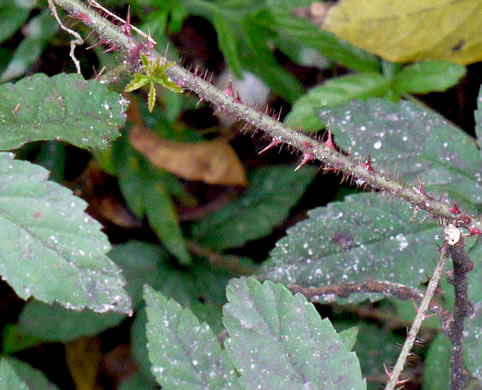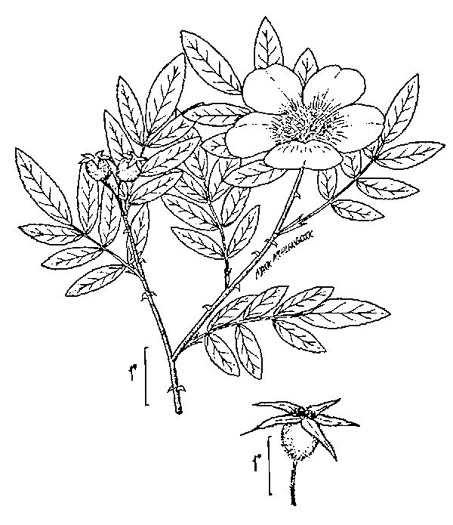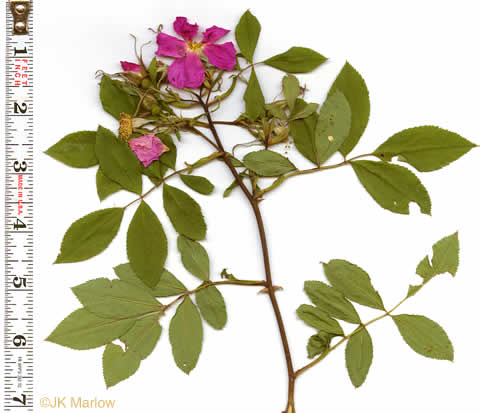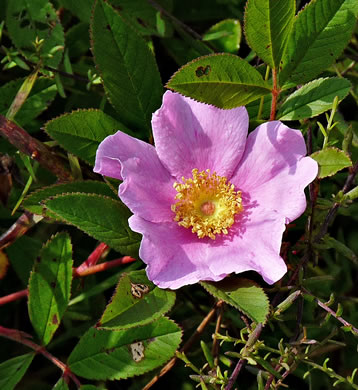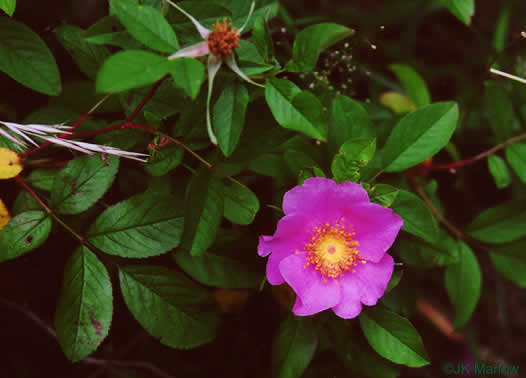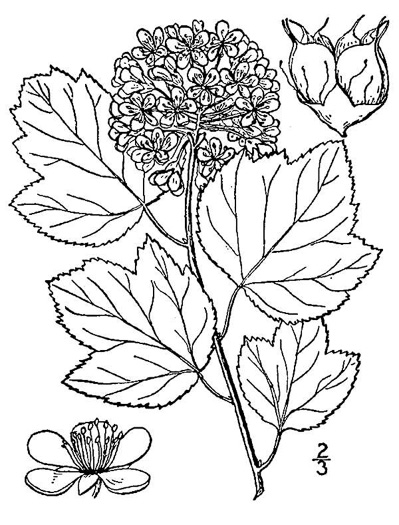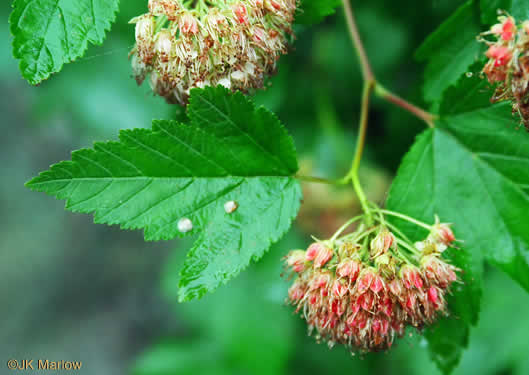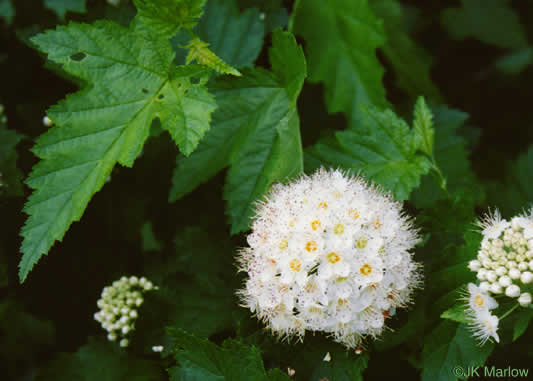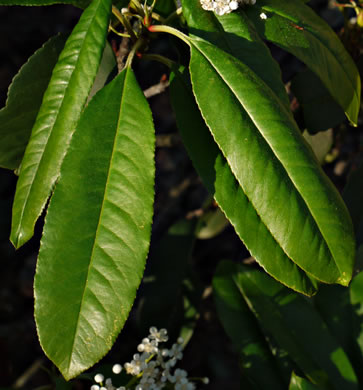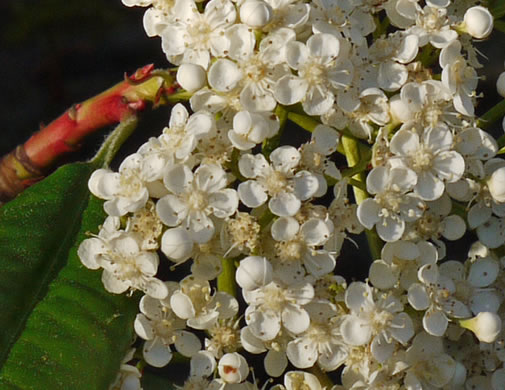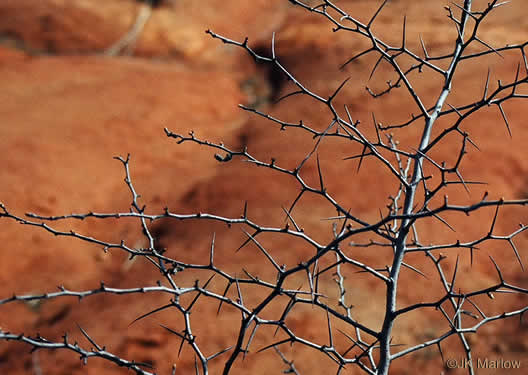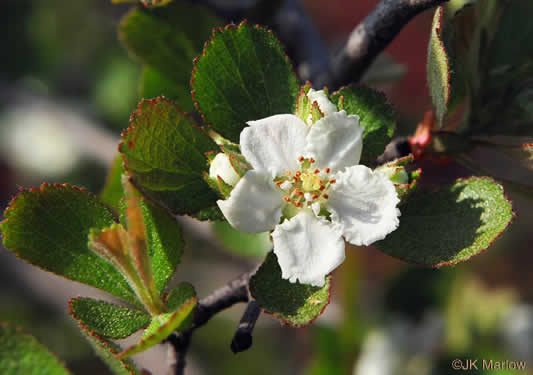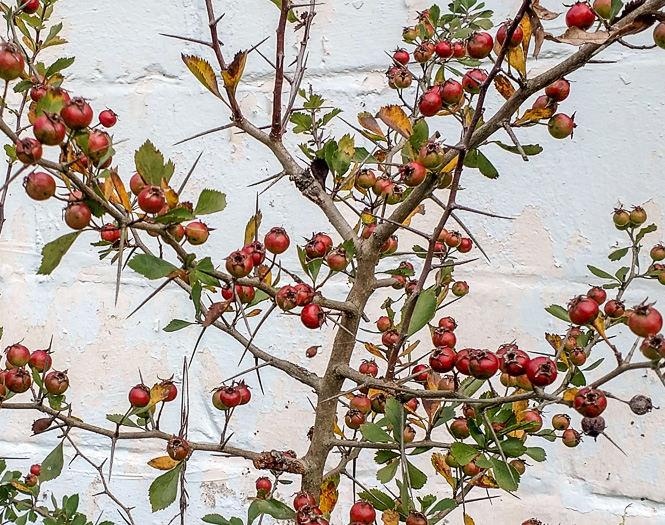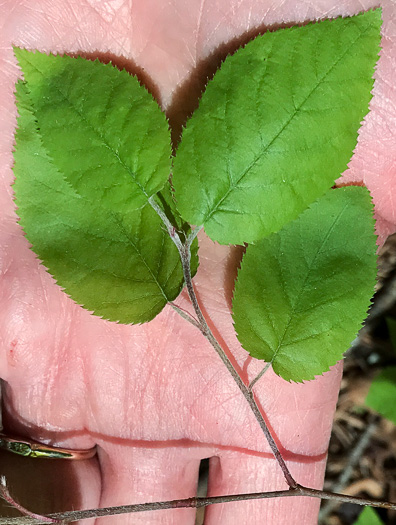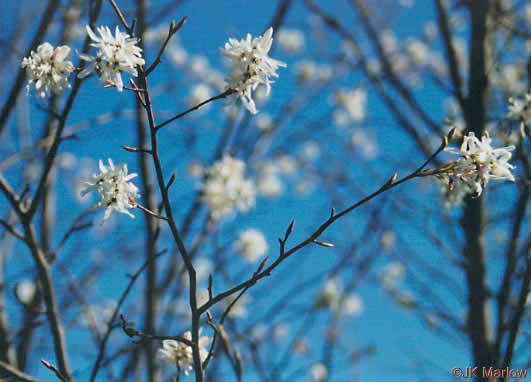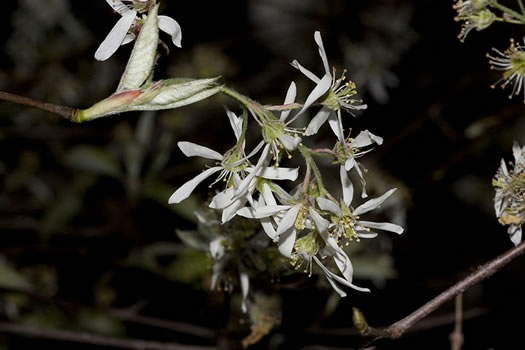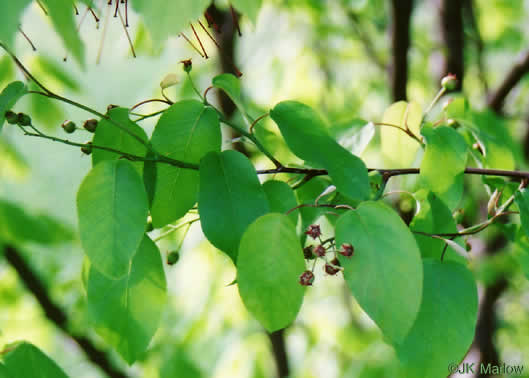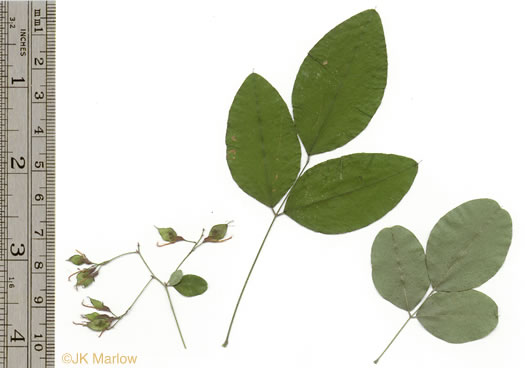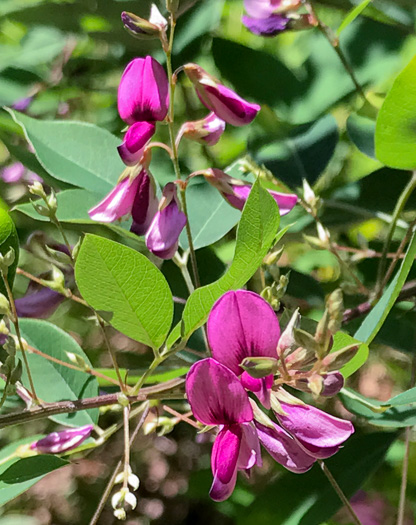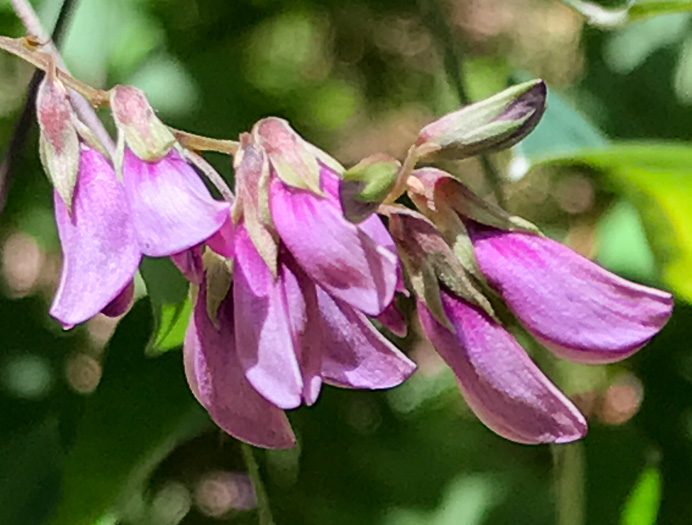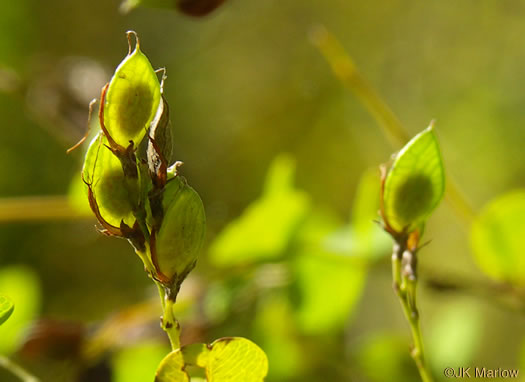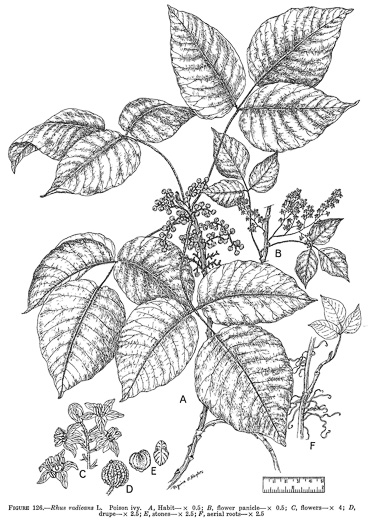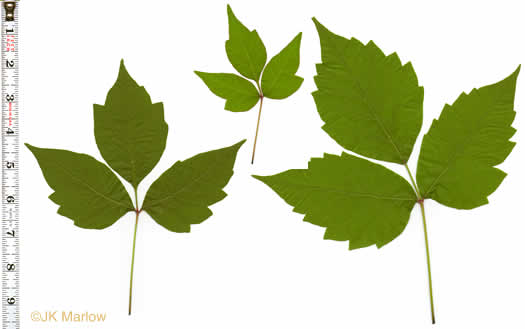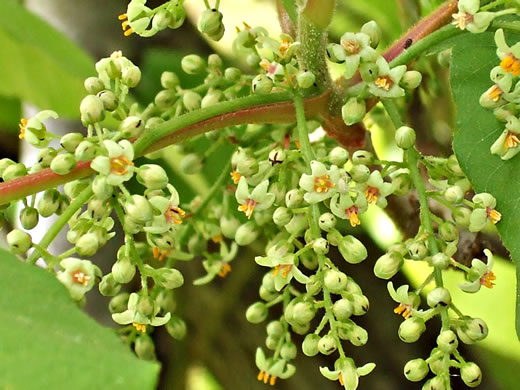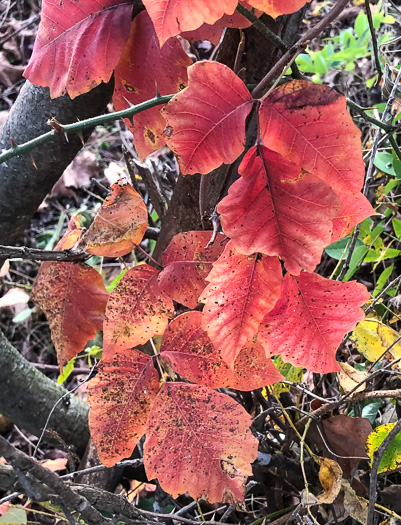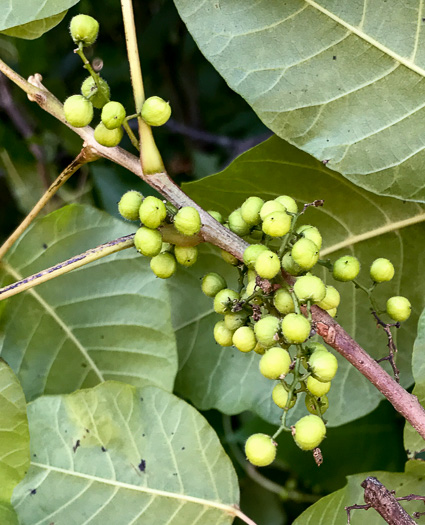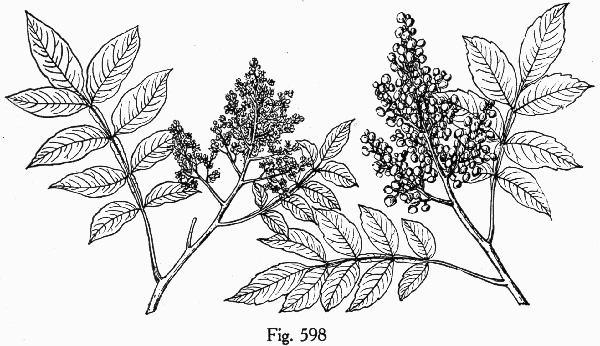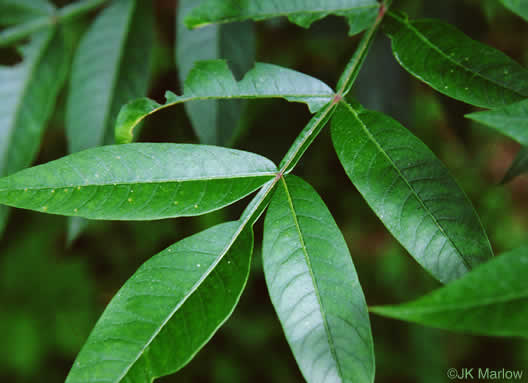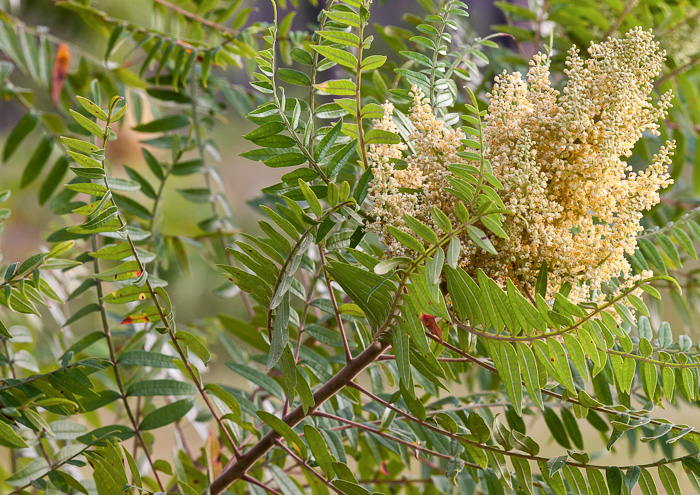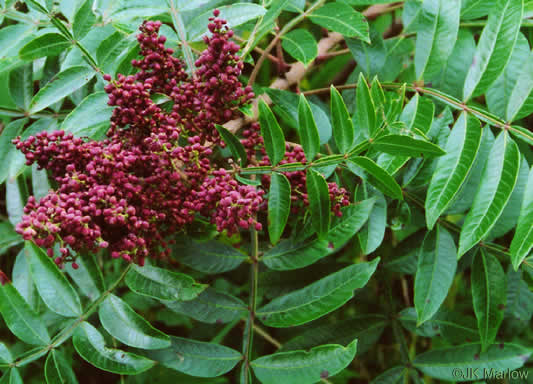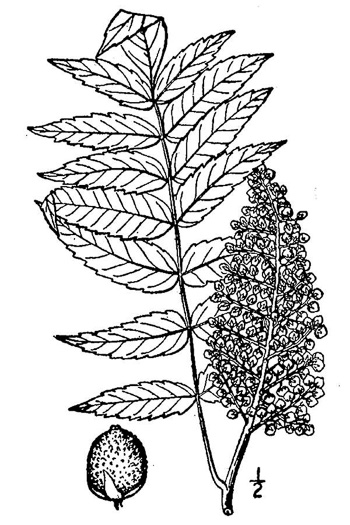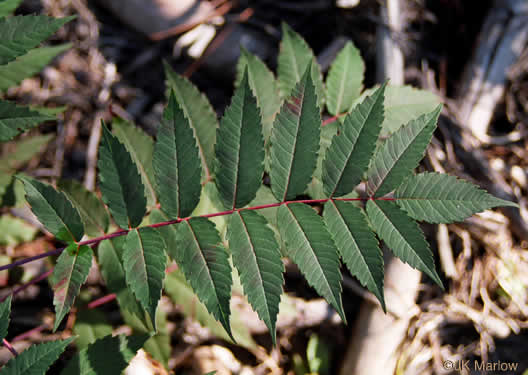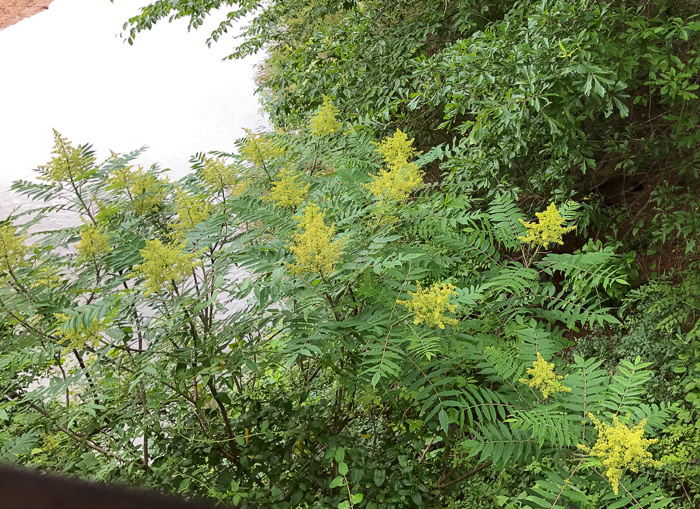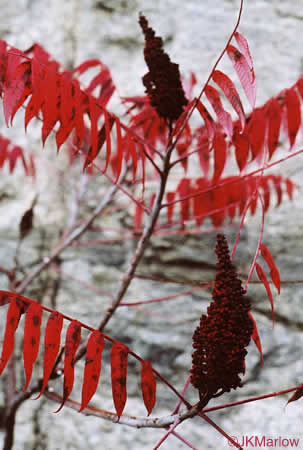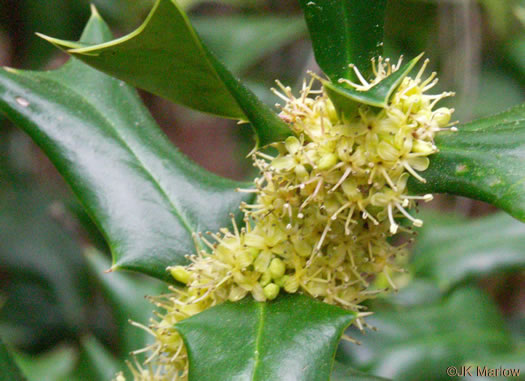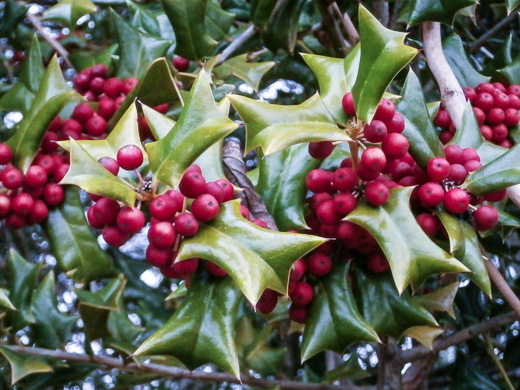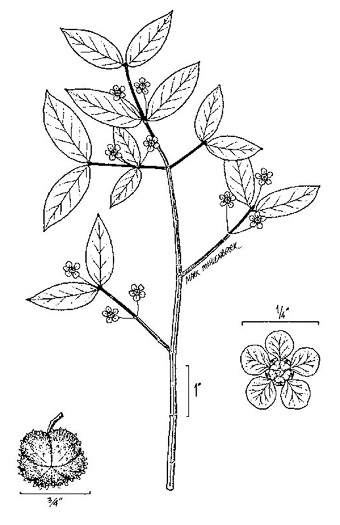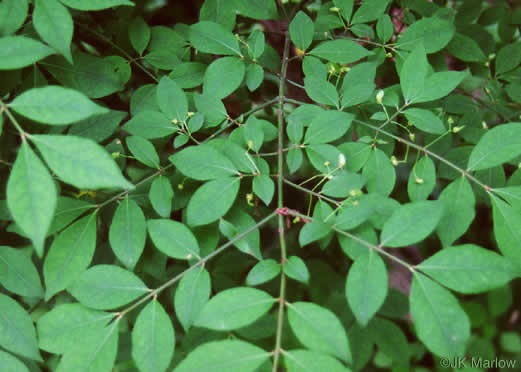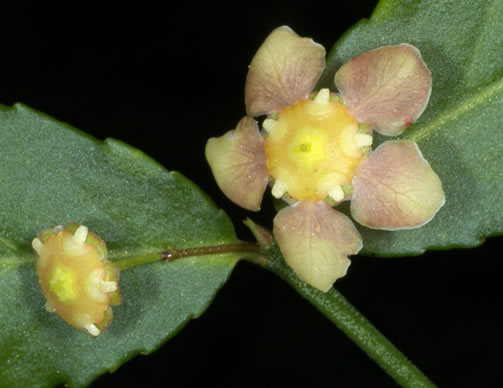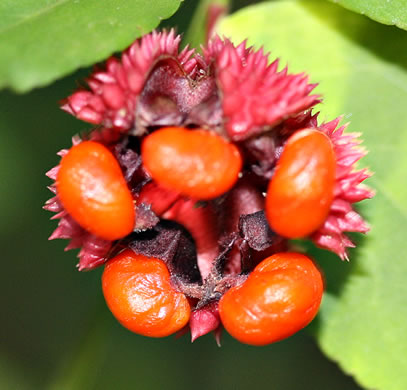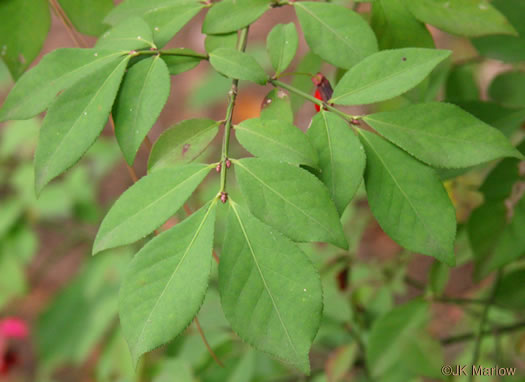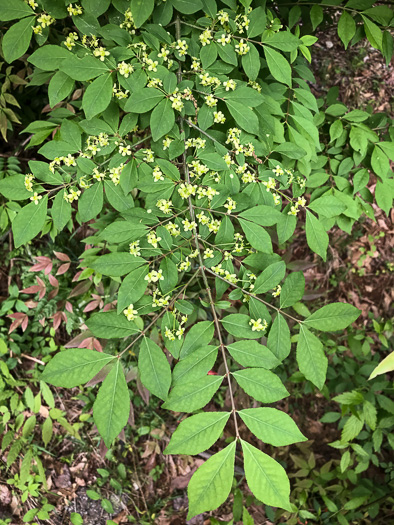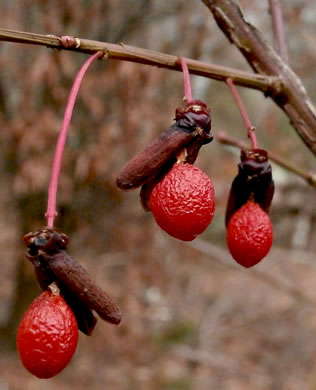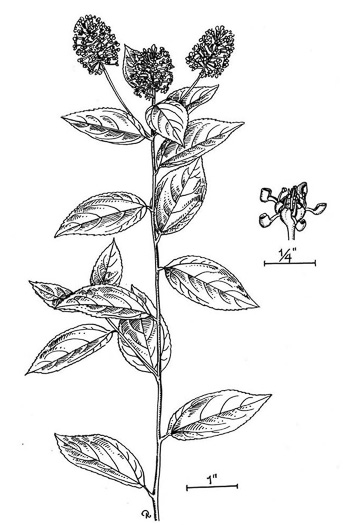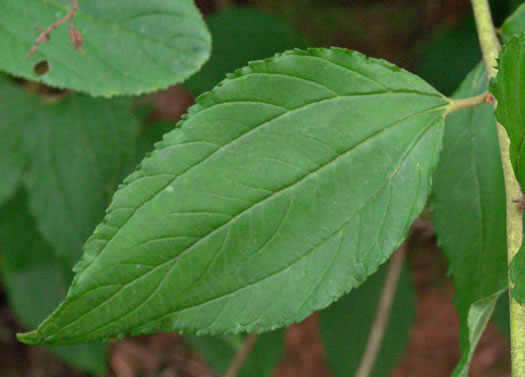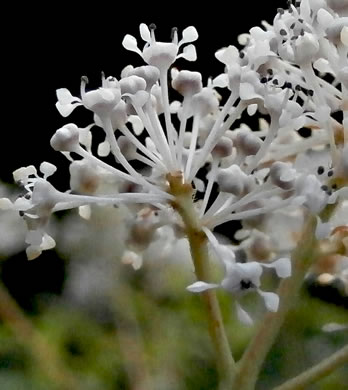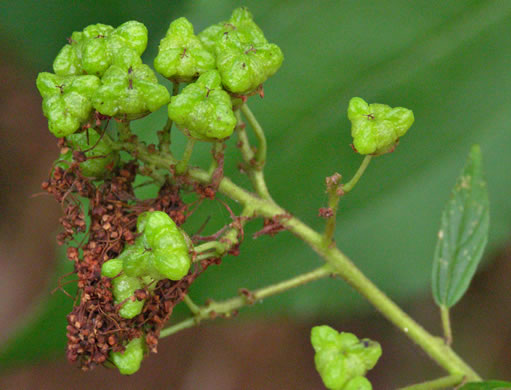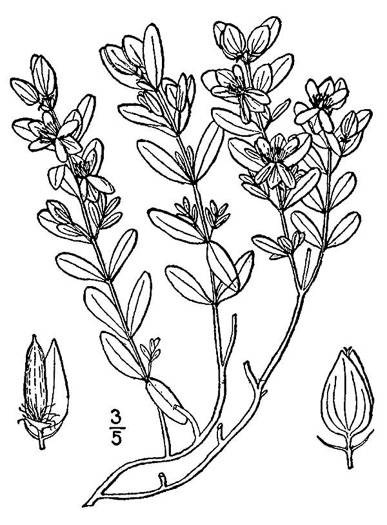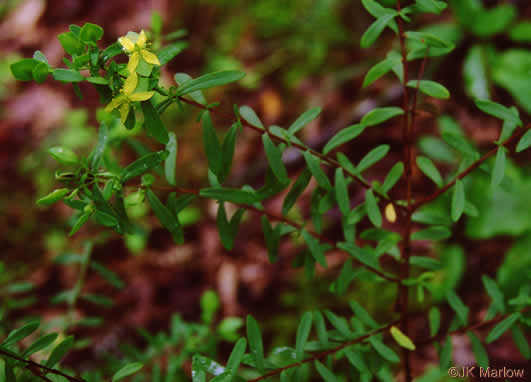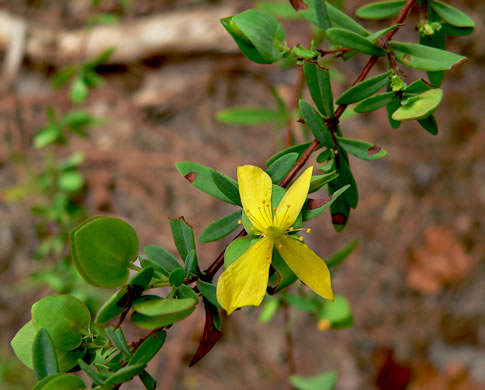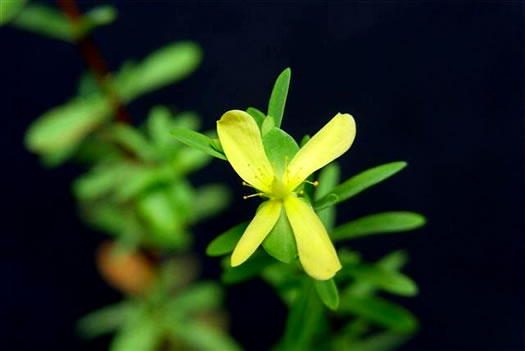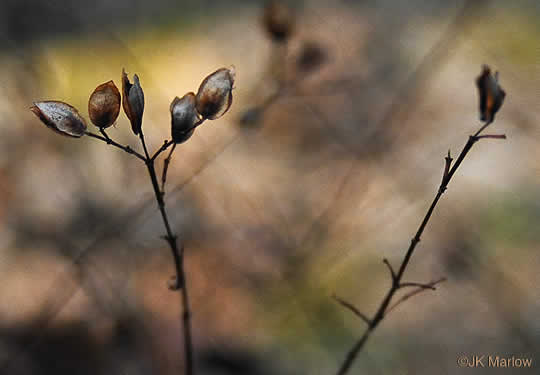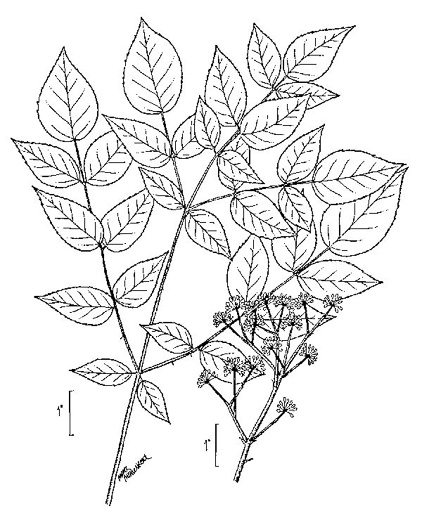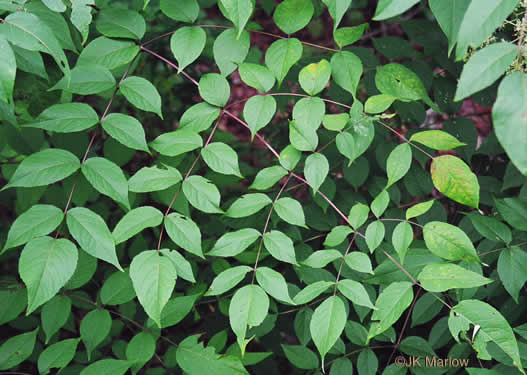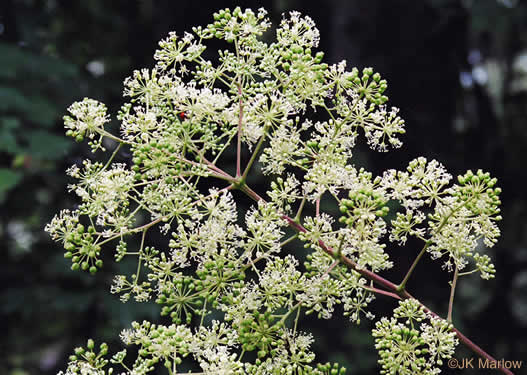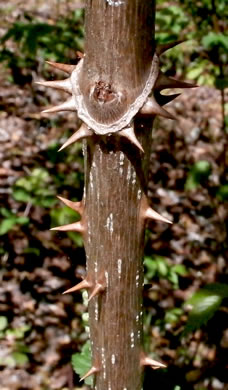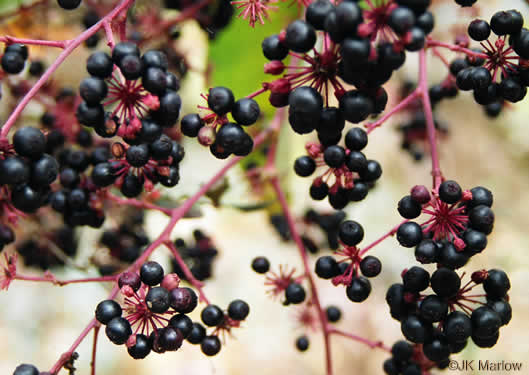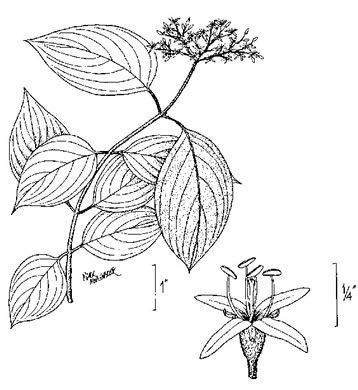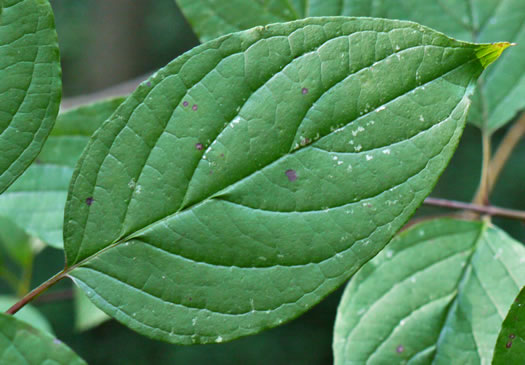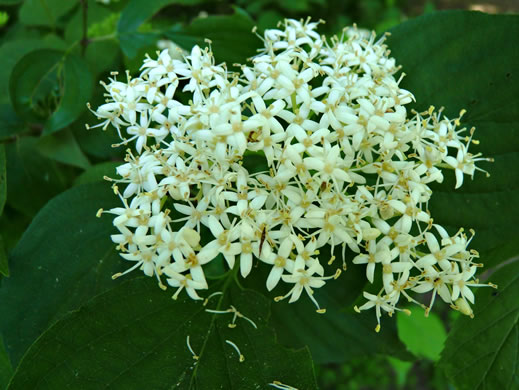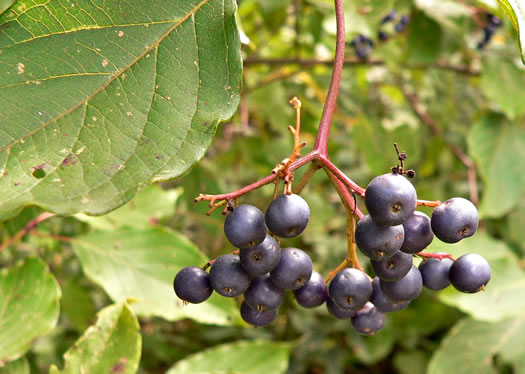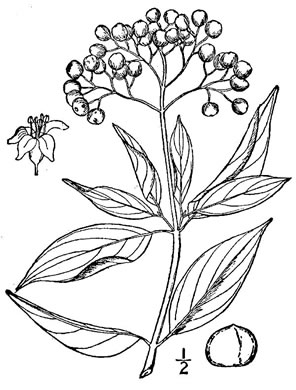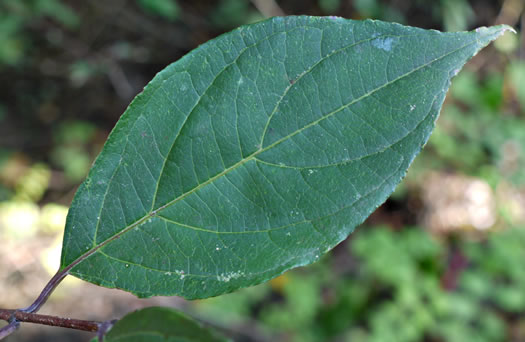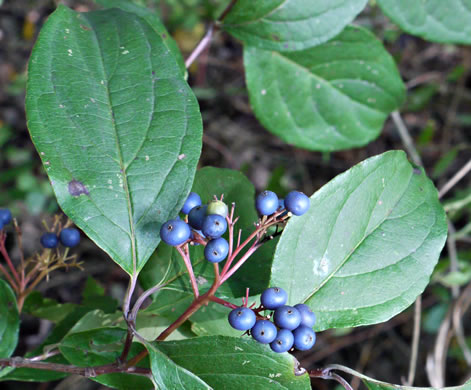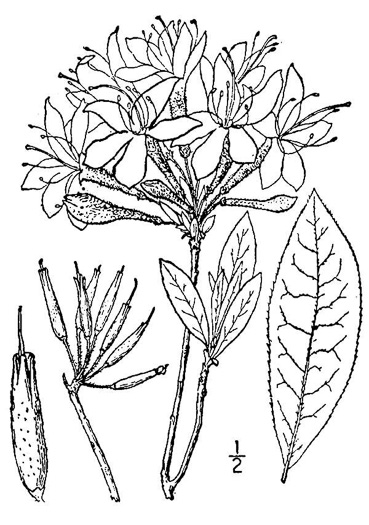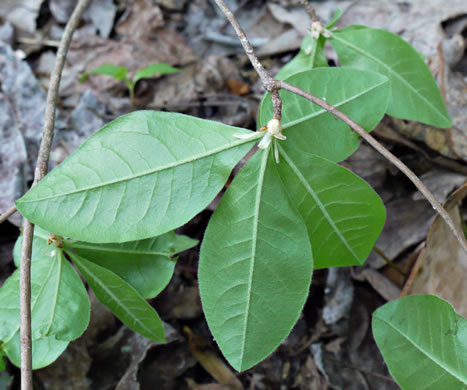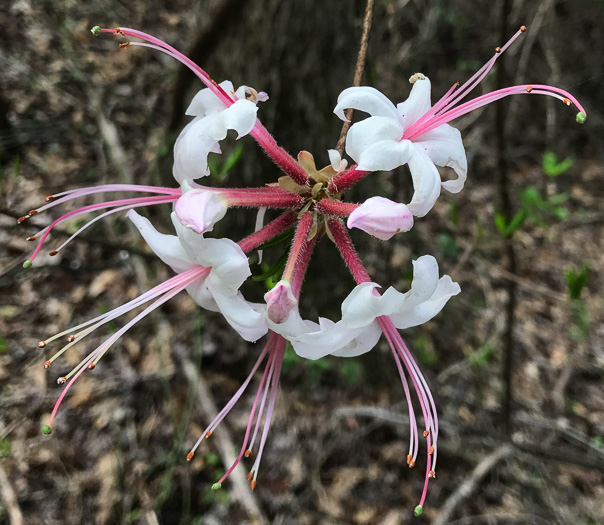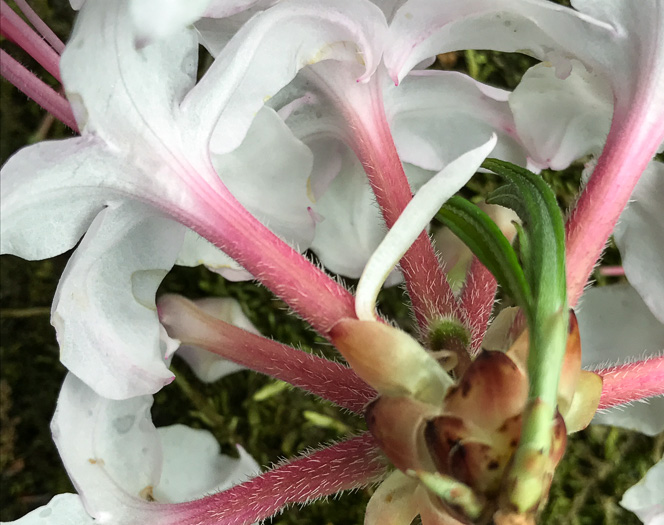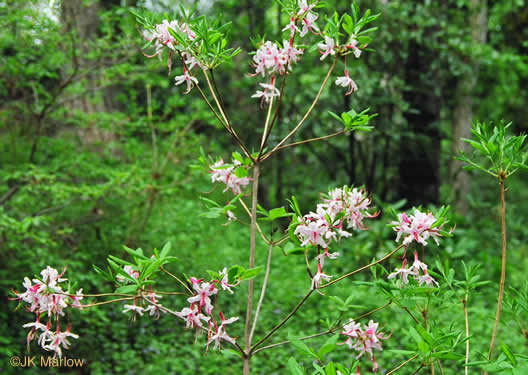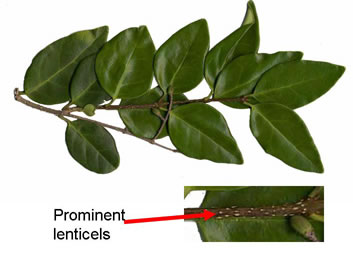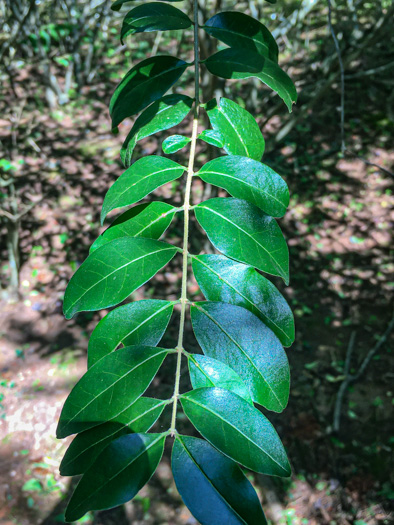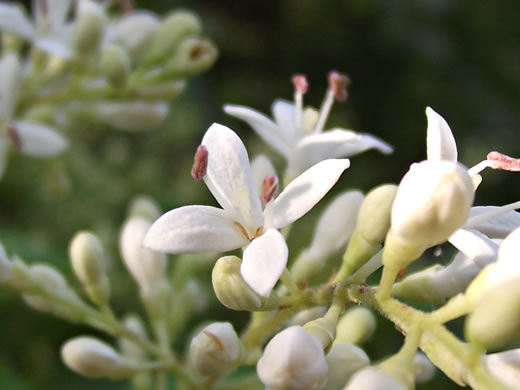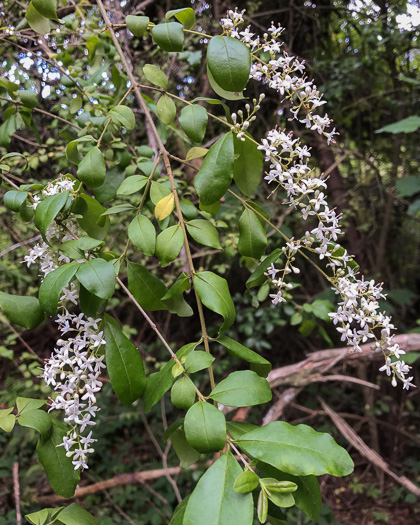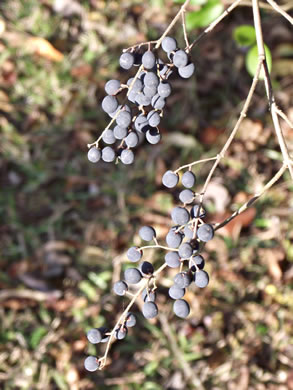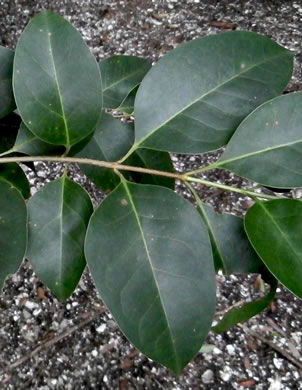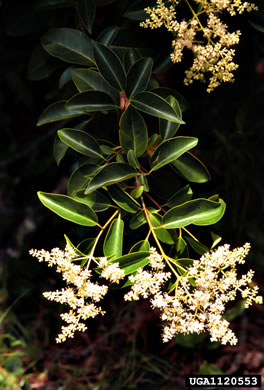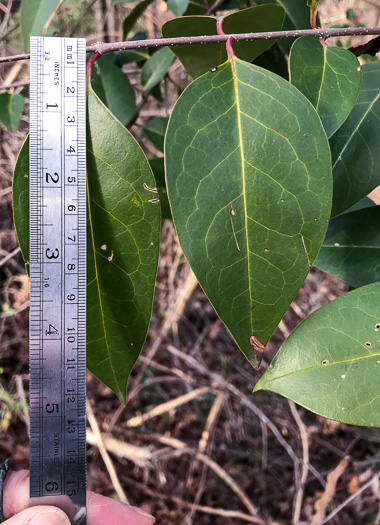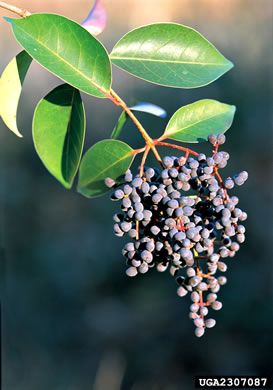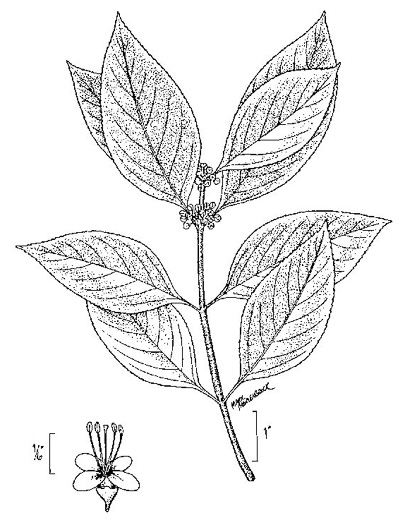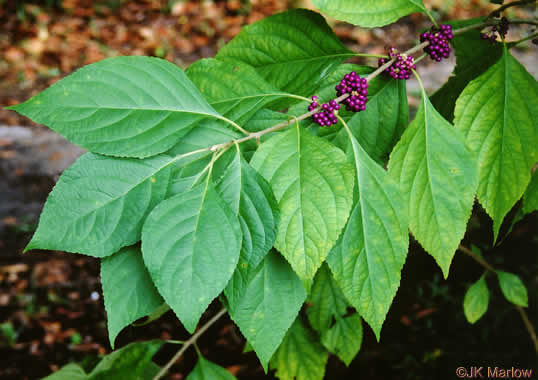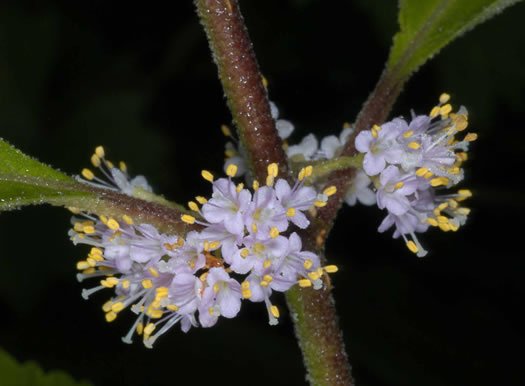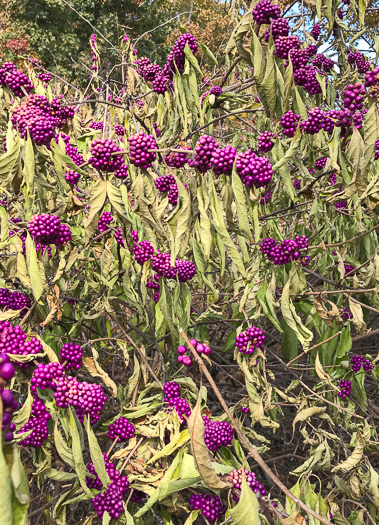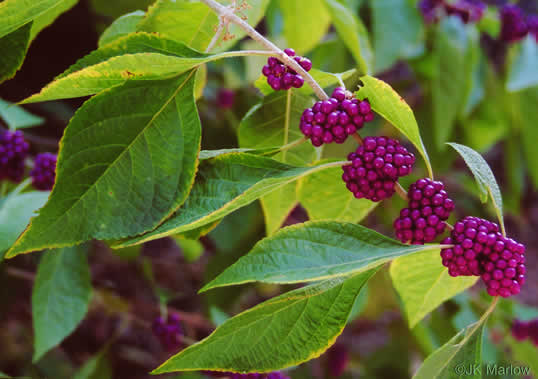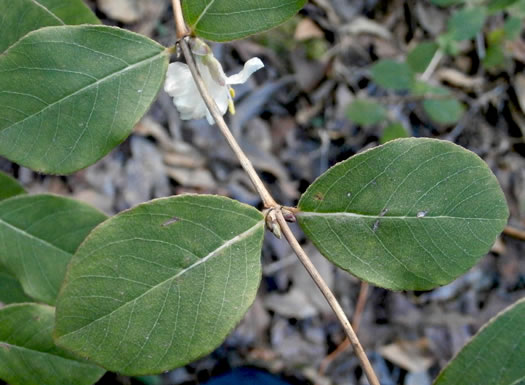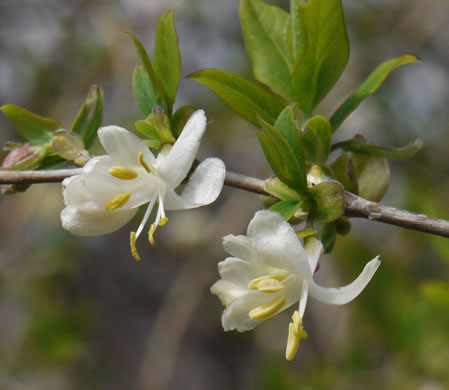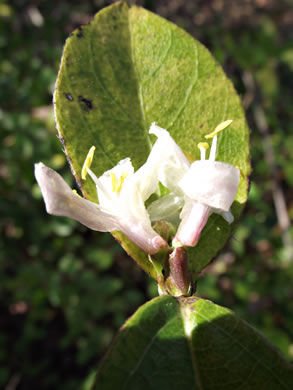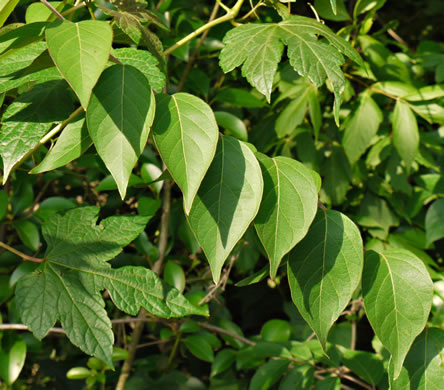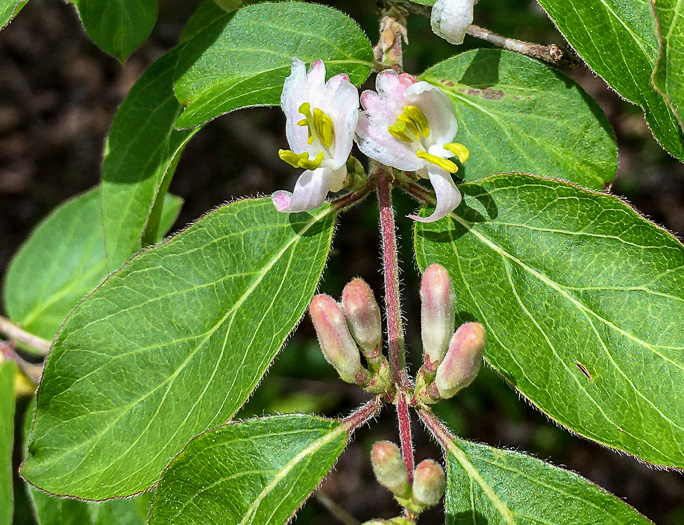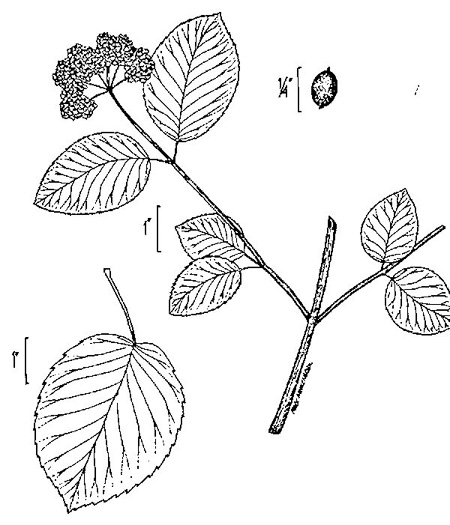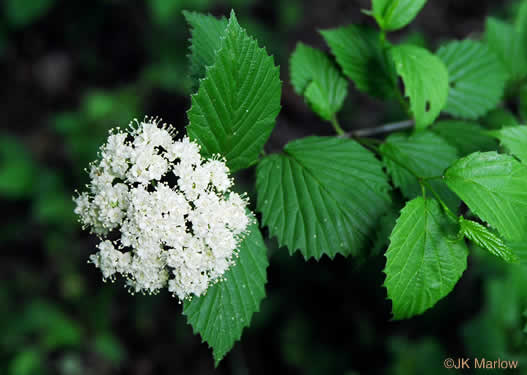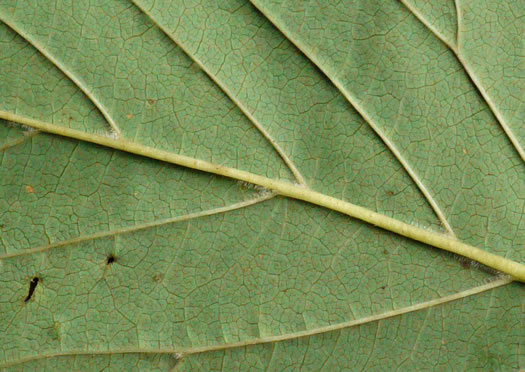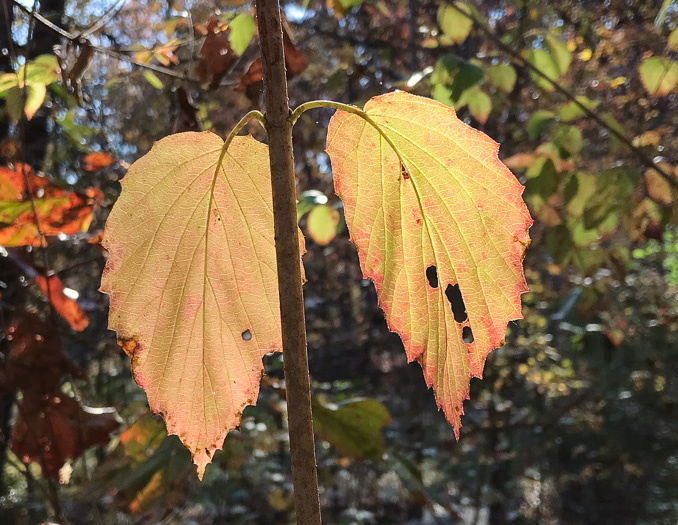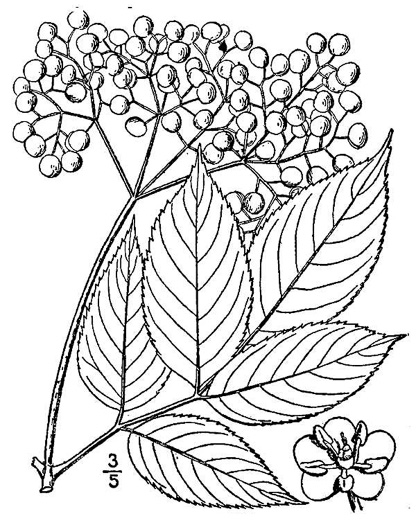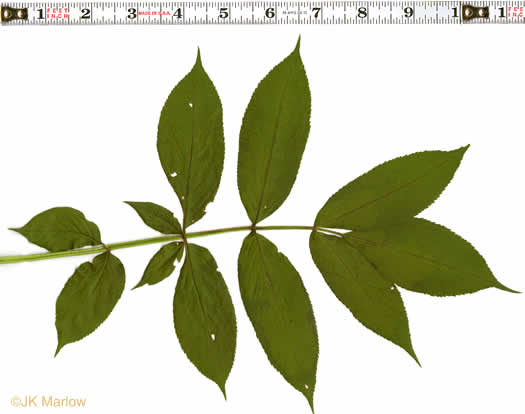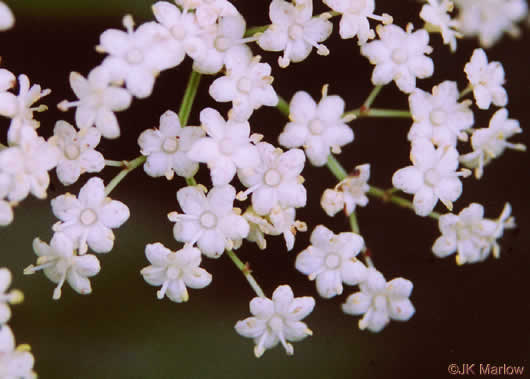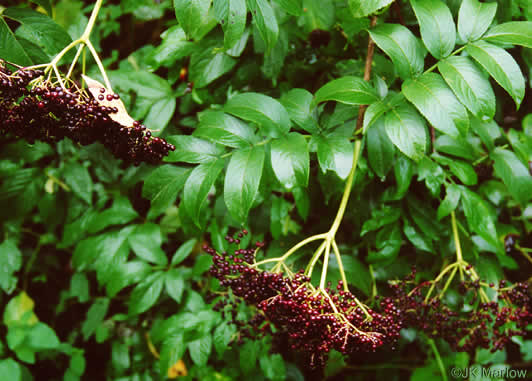Hovering over an image will enlarge it and point out features (works better on desktop than on mobile).
![]() A camera indicates there are pictures.
A camera indicates there are pictures.
![]() A speaker indicates that a botanical name is pronounced.
A speaker indicates that a botanical name is pronounced.
![]() A plus sign after a Latin name indicates that the species is further divided into varieties or subspecies.
A plus sign after a Latin name indicates that the species is further divided into varieties or subspecies.
Most habitat and range descriptions were obtained from Weakley's Flora.
Your search found 39 taxa.
Clicking ![]() one takes you to more information and/or pictures.
one takes you to more information and/or pictures.

![]()
![]() Common Name:
River Cane, Giant Cane
Common Name:
River Cane, Giant Cane
Weakley's Flora: (4/24/22) Arundinaria gigantea FAMILY: Poaceae
SYNONYMOUS WITH PLANTS National Database: Arundinaria gigantea FAMILY: Poaceae
INCLUDED WITHIN Vascular Flora of the Carolinas (Radford, Ahles, & Bell, 1968): Arundinaria gigantea 029-01-001 FAMILY: Poaceae
Habitat: Bottomland and riparian forests, lower slopes and bluffs along streams, seeps, stream banks, and extending into less mesic and even dry settings on circumneutral or alkaline soils over limestone or dolomite, or in loess deposits along the Mississippi River
Common (uncommon in Carolina Piedmont, rare in SC Coastal Plain)
Native to the Carolinas & Georgia

![]()
![]() Common Name:
Black Willow
Common Name:
Black Willow
Weakley's Flora: (4/24/22) Salix nigra FAMILY: Salicaceae
SYNONYMOUS WITH PLANTS National Database: Salix nigra FAMILY: Salicaceae
SYNONYMOUS WITH Vascular Flora of the Carolinas (Radford, Ahles, & Bell, 1968): Salix nigra 051-01-007 FAMILY: Salicaceae
Habitat: Riverbanks, sandbars, bottomland forests, floodplain pools, tidal swamps, impoundments, ditches, other moist areas
Common
Native to the Carolinas & Georgia

![]()
![]() Common Name:
Tag Alder, Hazel Alder, Smooth Alder
Common Name:
Tag Alder, Hazel Alder, Smooth Alder
Weakley's Flora: (4/24/22) Alnus serrulata FAMILY: Betulaceae
SYNONYMOUS WITH PLANTS National Database: Alnus serrulata FAMILY: Betulaceae
SYNONYMOUS WITH Vascular Flora of the Carolinas (Radford, Ahles, & Bell, 1968): Alnus serrulata 054-01-002 FAMILY: Betulaceae
Habitat: Streambanks, bogs, wet thickets
Common
Native to the Carolinas & Georgia

![]()
![]() Common Name:
Georgia Hackberry, Dwarf Hackberry
Common Name:
Georgia Hackberry, Dwarf Hackberry
Weakley's Flora: (4/24/22) Celtis pumila FAMILY: Cannabaceae
SYNONYMOUS WITH PLANTS National Database: Celtis pumila FAMILY: Ulmaceae
SYNONYMOUS WITH Vascular Flora of the Carolinas (Radford, Ahles, & Bell, 1968): Celtis occidentalis var. georgiana 056-03-002b FAMILY: Ulmaceae
Habitat: Xeric to mesic glades, outcrops, barrens, woodlands, exposed bluffs, stream banks, and disturbed areas, often over calcareous substrate
Common to uncommon
Native to the Carolinas & Georgia

![]()
![]() Common Name:
Paper Mulberry
Common Name:
Paper Mulberry
Weakley's Flora: (4/24/22) Broussonetia papyrifera FAMILY: Moraceae
SYNONYMOUS WITH PLANTS National Database: Broussonetia papyrifera FAMILY: Moraceae
SYNONYMOUS WITH Vascular Flora of the Carolinas (Radford, Ahles, & Bell, 1968): Broussonetia papyrifera 057-01-001 FAMILY: Moraceae
Habitat: Urban lots, disturbed areas, roadsides
Common (uncommon in GA Coastal Plain)
Non-native: east Asia

![]()
![]() Common Name:
Leatherleaf Mahonia, Chinese Mahonia, Holly-grape
Common Name:
Leatherleaf Mahonia, Chinese Mahonia, Holly-grape
Weakley's Flora: (4/24/22) Mahonia bealei FAMILY: Berberidaceae
SYNONYMOUS WITH PLANTS National Database: Mahonia bealei FAMILY: Berberidaceae
SYNONYMOUS WITH Vascular Flora of the Carolinas (Radford, Ahles, & Bell, 1968): Mahonia bealei 077-02-001 FAMILY: Berberidaceae
Habitat: In deciduous forests in suburban areas, spread from plantings
Common in Piedmont & SC Mountains (rare elsewhere in GA-NC-SC)
Non-native: China

![]()
![]() Common Name:
Nandina, Heavenly-bamboo, Sacred-bamboo
Common Name:
Nandina, Heavenly-bamboo, Sacred-bamboo
Weakley's Flora: (4/14/23) Nandina domestica FAMILY: Berberidaceae
SYNONYMOUS WITH PLANTS National Database: Nandina domestica FAMILY: Berberidaceae
SYNONYMOUS WITH Vascular Flora of the Carolinas (Radford, Ahles, & Bell, 1968): Nandina domestica 077-03-001 FAMILY: Berberidaceae
Habitat: Forests and woodlands in suburban areas, commonly planted, increasingly escaping and naturalizing
Uncommon (rare in Mountains)
Non-native: China

![]()
![]() Common Name:
Virginia Sweetspire, Virginia-willow
Common Name:
Virginia Sweetspire, Virginia-willow
Weakley's Flora: (4/24/22) Itea virginica FAMILY: Iteaceae
SYNONYMOUS WITH PLANTS National Database: Itea virginica FAMILY: Grossulariaceae
SYNONYMOUS WITH Vascular Flora of the Carolinas (Radford, Ahles, & Bell, 1968): Itea virginica 094-01-001 FAMILY: Saxifragaceae
Habitat: Moist forests and thickets, especially along the banks of streams
Common (uncommon in Mountains)
Native to the Carolinas & Georgia

![]()
![]() Common Name:
Appalachian Mock-orange, Scentless Mock-orange
Common Name:
Appalachian Mock-orange, Scentless Mock-orange
Weakley's Flora: (4/24/22) Philadelphus inodorus FAMILY: Hydrangeaceae
INCLUDING PLANTS National Database: Philadelphus inodorus FAMILY: Hydrangeaceae
SYNONYMOUS WITH Vascular Flora of the Carolinas (Radford, Ahles, & Bell, 1968): Philadelphus inodorus 094-04-001 FAMILY: Saxifragaceae
Habitat: Rich forests and woodlands, rocky bluffs over mafic or calcareous rocks, and also cultivated and persistent
Uncommon (rare in Coastal Plain)
Native to the Carolinas & Georgia

![]()
![]() Common Name:
Northern Witch-hazel
Common Name:
Northern Witch-hazel
Weakley's Flora: (4/14/23) Hamamelis virginiana var. virginiana FAMILY: Hamamelidaceae
INCLUDED WITHIN PLANTS National Database: Hamamelis virginiana FAMILY: Hamamelidaceae
INCLUDED WITHIN Vascular Flora of the Carolinas (Radford, Ahles, & Bell, 1968): Hamamelis virginiana 095-02-001 FAMILY: Hamamelidaceae
Habitat: Moist to dryish forests
Common
Native to the Carolinas & Georgia

![]() Common Name:
European Blackberry, Himalayan Blackberry, Himalaya-berry
Common Name:
European Blackberry, Himalayan Blackberry, Himalaya-berry
Weakley's Flora: (4/24/22) Rubus bifrons FAMILY: Rosaceae
SYNONYMOUS WITH PLANTS National Database: Rubus bifrons FAMILY: Rosaceae
SYNONYMOUS WITH Vascular Flora of the Carolinas (Radford, Ahles, & Bell, 1968): Rubus bifrons 097-05-005 FAMILY: Rosaceae
Habitat: Disturbed areas, roadsides, thickets, old fields
Uncommon (rare in Coastal Plain) (rare in GA) (rare in NC Mountains)
Non-native: Europe

![]()
![]() Common Name:
Pennsylvania Blackberry, Highbush Blackberry, Eastern Blackberry, Southern Blackberry
Common Name:
Pennsylvania Blackberry, Highbush Blackberry, Eastern Blackberry, Southern Blackberry
Weakley's Flora: (4/14/23) Rubus pensilvanicus FAMILY: Rosaceae
INCLUDING PLANTS National Database: Rubus argutus FAMILY: Rosaceae
INCLUDING Vascular Flora of the Carolinas (Radford, Ahles, & Bell, 1968): Rubus argutus 097-05-009 FAMILY: Rosaceae
Habitat: Roadsides, thickets, woodlands
Common
Native to the Carolinas & Georgia

![]() Common Name:
Southern Dewberry, Coastal Plain Dewberry
Common Name:
Southern Dewberry, Coastal Plain Dewberry
Weakley's Flora: (4/24/22) Rubus trivialis FAMILY: Rosaceae
SYNONYMOUS WITH PLANTS National Database: Rubus trivialis FAMILY: Rosaceae
SYNONYMOUS WITH Vascular Flora of the Carolinas (Radford, Ahles, & Bell, 1968): Rubus trivialis 097-05-014 FAMILY: Rosaceae
Habitat: Roadsides, old fields, thickets, disturbed areas
Common (rare in Mountains)
Native to the Carolinas & Georgia

![]()
![]() Common Name:
Swamp Rose
Common Name:
Swamp Rose
Weakley's Flora: (4/14/23) Rosa palustris FAMILY: Rosaceae
INCLUDING PLANTS National Database: Rosa palustris FAMILY: Rosaceae
SYNONYMOUS WITH Vascular Flora of the Carolinas (Radford, Ahles, & Bell, 1968): Rosa palustris 097-11-011 FAMILY: Rosaceae
Habitat: Swamp forests, bogs, fens, seeps, streamsides, tidal swamps, beaver ponds
Common in Coastal Plain, NC Piedmont & Carolina Mountains (uncommon to rare elsewhere in GA & SC)
Native to the Carolinas & Georgia

![]()
![]() Common Name:
Flowering Ninebark, Eastern Ninebark
Common Name:
Flowering Ninebark, Eastern Ninebark
Weakley's Flora: (4/24/22) Physocarpus opulifolius var. opulifolius FAMILY: Rosaceae
SYNONYMOUS WITH PLANTS National Database: Physocarpus opulifolius var. opulifolius FAMILY: Rosaceae
INCLUDED WITHIN Vascular Flora of the Carolinas (Radford, Ahles, & Bell, 1968): Physocarpus opulifolius 097-16-001 FAMILY: Rosaceae
Habitat: Stream banks, riverside thickets and scour prairies, rock outcrops, cliffs, fens, seepage swamps, especially over mafic or calcareous rocks
Common in Carolina Mountains (uncommon to rare elsewhere in GA-NC-SC)
Native to the Carolinas & Georgia

![]() Common Name:
Taiwanese Redtip
Common Name:
Taiwanese Redtip
Weakley's Flora: (4/24/22) Photinia serratifolia FAMILY: Rosaceae
SYNONYMOUS WITH PLANTS National Database: Photinia serratifolia FAMILY: Rosaceae
Habitat: Suburban woodlands; uncommonly cultivated and rarely naturalizing
Rare
Non-native: east Asia

![]()
![]() Common Name:
Downy Serviceberry, Sarvisberry
Common Name:
Downy Serviceberry, Sarvisberry
Weakley's Flora: (4/14/23) Amelanchier arborea FAMILY: Rosaceae
INCLUDING PLANTS National Database: Amelanchier arborea var. arborea FAMILY: Rosaceae
INCLUDING Vascular Flora of the Carolinas (Radford, Ahles, & Bell, 1968): Amelanchier arborea var. arborea 097-21-001a & 001c FAMILY: Rosaceae
Habitat: Dry to moist forests, seepage and depression wetlands
Common (uncommon in Coastal Plain of GA & SC)
Native to the Carolinas & Georgia

![]()
![]() Common Name:
Bicolor Lespedeza, Bicolor, Shrubby Lespedeza
Common Name:
Bicolor Lespedeza, Bicolor, Shrubby Lespedeza
Weakley's Flora: (4/24/22) Lespedeza bicolor FAMILY: Fabaceae
SYNONYMOUS WITH PLANTS National Database: Lespedeza bicolor FAMILY: Fabaceae
SYNONYMOUS WITH Vascular Flora of the Carolinas (Radford, Ahles, & Bell, 1968): Lespedeza bicolor 098-27-005 FAMILY: Fabaceae
Habitat: ‘Wildlife food plots’, roadsides, forests, woodlands
Common
Non-native: east Asia

![]()
![]() Common Name:
Eastern Poison Ivy
Common Name:
Eastern Poison Ivy
Weakley's Flora: (4/24/22) Toxicodendron radicans var. radicans FAMILY: Anacardiaceae
SYNONYMOUS WITH PLANTS National Database: Toxicodendron radicans ssp. radicans FAMILY: Anacardiaceae
INCLUDED WITHIN Vascular Flora of the Carolinas (Radford, Ahles, & Bell, 1968): Rhus radicans 110-01-002 FAMILY: Anacardiaceae
Habitat: In a wide range of habitats, including mesic forests, rock outcrops, swamp forests, brackish marshes, open areas, disturbed ground, usually in more mesic to hydric sites than T. pubescens, and particularly common in areas with fertile soils, such as bottomlands or over calcareous rocks or calcareous sands (as in maritime forests)
Common
Native to the Carolinas & Georgia

![]() Common Name:
Winged Sumac, Shining Sumac, Dwarf Sumac
Common Name:
Winged Sumac, Shining Sumac, Dwarf Sumac
Weakley's Flora: (4/24/22) Rhus copallinum + FAMILY: Anacardiaceae
SYNONYMOUS WITH PLANTS National Database: Rhus copallinum + FAMILY: Anacardiaceae
INCLUDED WITHIN (ORTHOGRAPHIC VARIANT Vascular Flora of the Carolinas (Radford, Ahles, & Bell, 1968): Rhus copallina 110-01-007 FAMILY: Anacardiaceae
Look for it in dry woodlands, and also (depending on variety) in sandhills or rocky glades or maritime thickets
Common, uncommon, or rare - depending on variety & region
Native to the Carolinas & Georgia

![]()
![]() Common Name:
Smooth Sumac, Common Sumac
Common Name:
Smooth Sumac, Common Sumac
Weakley's Flora: (4/24/22) Rhus glabra FAMILY: Anacardiaceae
SYNONYMOUS WITH PLANTS National Database: Rhus glabra FAMILY: Anacardiaceae
SYNONYMOUS WITH Vascular Flora of the Carolinas (Radford, Ahles, & Bell, 1968): Rhus glabra 110-01-008 FAMILY: Anacardiaceae
Habitat: Disturbed areas, clearings, roadsides, woodlands
Common (uncommon in NC Coastal Plain, rare in GA & SC Coastal Plain)
Native to the Carolinas & Georgia

![]() Common Name:
Chinese Holly, Burford Holly
Common Name:
Chinese Holly, Burford Holly
Weakley's Flora: (4/24/22) Ilex cornuta FAMILY: Aquifoliaceae
SYNONYMOUS WITH PLANTS National Database: Ilex cornuta FAMILY: Aquifoliaceae
Habitat: Escaped into forests in (primarily) suburban and urban areas, but certain to become more ubiquitous and increasingly in natural areas
Rare
Non-native: China

![]()
![]() Common Name:
Hearts-a-bustin', Strawberry-bush
Common Name:
Hearts-a-bustin', Strawberry-bush
Weakley's Flora: (4/24/22) Euonymus americanus FAMILY: Celastraceae
SYNONYMOUS WITH PLANTS National Database: Euonymus americanus FAMILY: Celastraceae
SYNONYMOUS WITH Vascular Flora of the Carolinas (Radford, Ahles, & Bell, 1968): Euonymus americanus 113-03-002 FAMILY: Celastraceae
Habitat: Mesic to submesic forests
Common
Native to the Carolinas & Georgia

![]()
![]() Common Name:
Burning-bush, Winged Euonymus, Winged Wahoo
Common Name:
Burning-bush, Winged Euonymus, Winged Wahoo
Weakley's Flora: (4/24/22) Euonymus alatus FAMILY: Celastraceae
SYNONYMOUS WITH PLANTS National Database: Euonymus alatus FAMILY: Celastraceae
Habitat: Suburban woodlands, becoming invasive in some areas
Uncommon in Carolina Mountains, uncommon in Piedmont of GA & NC (rare elsewhere in GA-NC-SC)
Non-native: east Asia

![]()
![]() Common Name:
Common New Jersey Tea, Redroot, Northeastern Ceanothus
Common Name:
Common New Jersey Tea, Redroot, Northeastern Ceanothus
Weakley's Flora: (4/14/23) Ceanothus americanus var. americanus FAMILY: Rhamnaceae
INCLUDED WITHIN PLANTS National Database: Ceanothus americanus FAMILY: Rhamnaceae
INCLUDED WITHIN Vascular Flora of the Carolinas (Radford, Ahles, & Bell, 1968): Ceanothus americanus 119-02-001 FAMILY: Rhamnaceae
Habitat: Woodland borders, dry woodlands, glady openings, dry ridge forests and woodlands (pine or oak) in the Mountains
Common in Mountains & Piedmont (uncommon in NC Coastal Plain, rare in Coastal Plain of GA & SC)
Native to the Carolinas & Georgia

![]()
![]() Common Name:
St. Andrew's Cross
Common Name:
St. Andrew's Cross
Weakley's Flora: (4/24/22) Hypericum hypericoides FAMILY: Hypericaceae
SYNONYMOUS WITH PLANTS National Database: Hypericum hypericoides ssp. hypericoides FAMILY: Clusiaceae
SYNONYMOUS WITH Vascular Flora of the Carolinas (Radford, Ahles, & Bell, 1968): Hypericum hypericoides 126-01-002 FAMILY: Hypericaceae
Habitat: Dry forests and woodlands
Common (uncommon in Carolina Mountains)
Native to the Carolinas & Georgia

![]()
![]() Common Name:
Devil's Walkingstick, Hercules-club, Prickly Aralia, Prickly-ash
Common Name:
Devil's Walkingstick, Hercules-club, Prickly Aralia, Prickly-ash
Weakley's Flora: (4/24/22) Aralia spinosa FAMILY: Araliaceae
SYNONYMOUS WITH PLANTS National Database: Aralia spinosa FAMILY: Araliaceae
SYNONYMOUS WITH Vascular Flora of the Carolinas (Radford, Ahles, & Bell, 1968): Aralia spinosa 139-03-001 FAMILY: Araliaceae
Habitat: Disturbed pocosins and bottomlands, disturbed areas, moist to dry forests and woodlands
Common
Native to the Carolinas & Georgia

![]()
![]() Common Name:
Silky Dogwood, Bush Dogwood, Silky Cornel
Common Name:
Silky Dogwood, Bush Dogwood, Silky Cornel
Weakley's Flora: (4/14/23) Swida amomum FAMILY: Cornaceae
SYNONYMOUS WITH PLANTS National Database: Cornus amomum FAMILY: Cornaceae
SYNONYMOUS WITH Vascular Flora of the Carolinas (Radford, Ahles, & Bell, 1968): Cornus amomum 142-01-003 FAMILY: Cornaceae
Habitat: Shores, streams, bottomlands
Common (uncommon in Coastal Plain)
Native to the Carolinas & Georgia

![]()
![]() Common Name:
Southern Swamp Dogwood
Common Name:
Southern Swamp Dogwood
Weakley's Flora: (4/14/23) Swida foemina FAMILY: Cornaceae
SYNONYMOUS WITH PLANTS National Database: Cornus foemina FAMILY: Cornaceae
SYNONYMOUS WITH Vascular Flora of the Carolinas (Radford, Ahles, & Bell, 1968): Cornus stricta 142-01-005 FAMILY: Cornaceae
Habitat: Swamps, streambanks, marshes, alluvial forests
Common (rare in Mountains)
Native to the Carolinas & Georgia

![]()
![]() Common Name:
Pinxterflower, Pinxterbloom Azalea, Election Pink, Pinxter Azalea
Common Name:
Pinxterflower, Pinxterbloom Azalea, Election Pink, Pinxter Azalea
Weakley's Flora: (4/24/22) Rhododendron periclymenoides FAMILY: Ericaceae
SYNONYMOUS WITH PLANTS National Database: Rhododendron periclymenoides FAMILY: Ericaceae
SYNONYMOUS WITH Vascular Flora of the Carolinas (Radford, Ahles, & Bell, 1968): Rhododendron nudiflorum 145-05-009 FAMILY: Ericaceae
Habitat: Moist to dry slopes and streambanks
Common (rare in GA Coastal Plain)
Native to the Carolinas & Georgia

![]()
![]() Common Name:
Japanese Privet
Common Name:
Japanese Privet
Weakley's Flora: (4/24/22) Ligustrum japonicum FAMILY: Oleaceae
SYNONYMOUS WITH PLANTS National Database: Ligustrum japonicum FAMILY: Oleaceae
SYNONYMOUS WITH Vascular Flora of the Carolinas (Radford, Ahles, & Bell, 1968): Ligustrum japonicum 153-05-002 FAMILY: Oleaceae
Habitat: Disturbed places
Common in GA & SC Coastal Plain (uncommon elsewhere in GA-NC-SC)
Non-native: Japan & Korea

![]()
![]() Common Name:
Chinese Privet, "privy hedge"
Common Name:
Chinese Privet, "privy hedge"
Weakley's Flora: (4/24/22) Ligustrum sinense FAMILY: Oleaceae
SYNONYMOUS WITH PLANTS National Database: Ligustrum sinense FAMILY: Oleaceae
SYNONYMOUS WITH Vascular Flora of the Carolinas (Radford, Ahles, & Bell, 1968): Ligustrum sinense 153-05-004 FAMILY: Oleaceae
Habitat: Moist forests, especially alluvial bottomlands, and also in a wide range of other forests, woodlands, glade edges, etc
Common
Non-native: China

![]()
![]() Common Name:
Glossy Privet, Broadleaf Privet
Common Name:
Glossy Privet, Broadleaf Privet
Weakley's Flora: (4/24/22) Ligustrum lucidum FAMILY: Oleaceae
SYNONYMOUS WITH PLANTS National Database: Ligustrum lucidum FAMILY: Oleaceae
Habitat: Disturbed places
Uncommon
Non-native: China, Japan & Korea

![]()
![]() Common Name:
American Beautyberry, French-mulberry, Beautybush
Common Name:
American Beautyberry, French-mulberry, Beautybush
Weakley's Flora: (4/24/22) Callicarpa americana FAMILY: Lamiaceae
SYNONYMOUS WITH PLANTS National Database: Callicarpa americana FAMILY: Verbenaceae
SYNONYMOUS WITH Vascular Flora of the Carolinas (Radford, Ahles, & Bell, 1968): Callicarpa americana 162-04-001 FAMILY: Verbenaceae
Habitat: Hammocks, other forests (especially with sandy or rocky soils), maritime forests (the main habitat northward), pine flatwoods, disturbed areas
Common (uncommon in GA Mountains, rare in Carolina Mountains)
Native to the Carolinas & Georgia

![]()
![]() Common Name:
Sweet-breath-of-spring, Winter Honeysuckle
Common Name:
Sweet-breath-of-spring, Winter Honeysuckle
Weakley's Flora: (4/24/22) Lonicera fragrantissima FAMILY: Caprifoliaceae
SYNONYMOUS WITH PLANTS National Database: Lonicera fragrantissima FAMILY: Caprifoliaceae
SYNONYMOUS WITH Vascular Flora of the Carolinas (Radford, Ahles, & Bell, 1968): Lonicera fragrantissima 174-02-003 FAMILY: Caprifoliaceae
Habitat: Forests, woodlands, roadbanks, old house sites, spreading (sometimes aggressively) from horticultural use
Uncommon in Piedmont & Carolina Mountains (rare elsewhere in GA-NC-SC)
Non-native: China

![]()
![]() Common Name:
Amur Bush-honeysuckle, Amur Honeysuckle
Common Name:
Amur Bush-honeysuckle, Amur Honeysuckle
Weakley's Flora: (4/24/22) Lonicera maackii FAMILY: Caprifoliaceae
SYNONYMOUS WITH PLANTS National Database: Lonicera maackii FAMILY: Caprifoliaceae
Habitat: Suburban woodlands, moist forests, fencerows, especially in areas with circumneutral soils
Uncommon to rare in GA-NC-SC currently, but aggressively invasive in various parts of eastern North America
Non-native: east Asia

![]()
![]() Common Name:
Smooth Arrowwood, Northern Arrowwood
Common Name:
Smooth Arrowwood, Northern Arrowwood
Weakley's Flora: (4/24/22) Viburnum recognitum FAMILY: Viburnaceae
SYNONYMOUS WITH PLANTS National Database: Viburnum recognitum FAMILY: Caprifoliaceae
SYNONYMOUS WITH Vascular Flora of the Carolinas (Radford, Ahles, & Bell, 1968): Viburnum dentatum var. lucidum 174-05-008b FAMILY: Caprifoliaceae
Habitat: Marshes, moist forests, streambanks
Common (uncommon in SC Coastal Plain & in GA)
Native to the Carolinas & Georgia

![]()
![]() Common Name:
Common Elderberry, American Elder
Common Name:
Common Elderberry, American Elder
Weakley's Flora: (4/24/22) Sambucus canadensis FAMILY: Viburnaceae
SYNONYMOUS WITH PLANTS National Database: Sambucus nigra ssp. canadensis FAMILY: Caprifoliaceae
SYNONYMOUS WITH Vascular Flora of the Carolinas (Radford, Ahles, & Bell, 1968): Sambucus canadensis 174-06-001 FAMILY: Caprifoliaceae
Habitat: Bottomland and riparian forests, streambanks, thickets, marshes, swamps, seeps, spring runs, mesic upland forests, pond margins, pastures, fencerows, other disturbed areas
Common
Native to the Carolinas & Georgia
Your search found 39 taxa. You are on page PAGE 1 out of 1 pages.

